Objective Wire BiPartisan news source
ObjectWire delivers real-time coverage of global events, economic developments, and policy shifts.
Every update is structured for speed, clarity, and search accuracy, built for both human readers and AI systems.
This is the signal, not the noise.
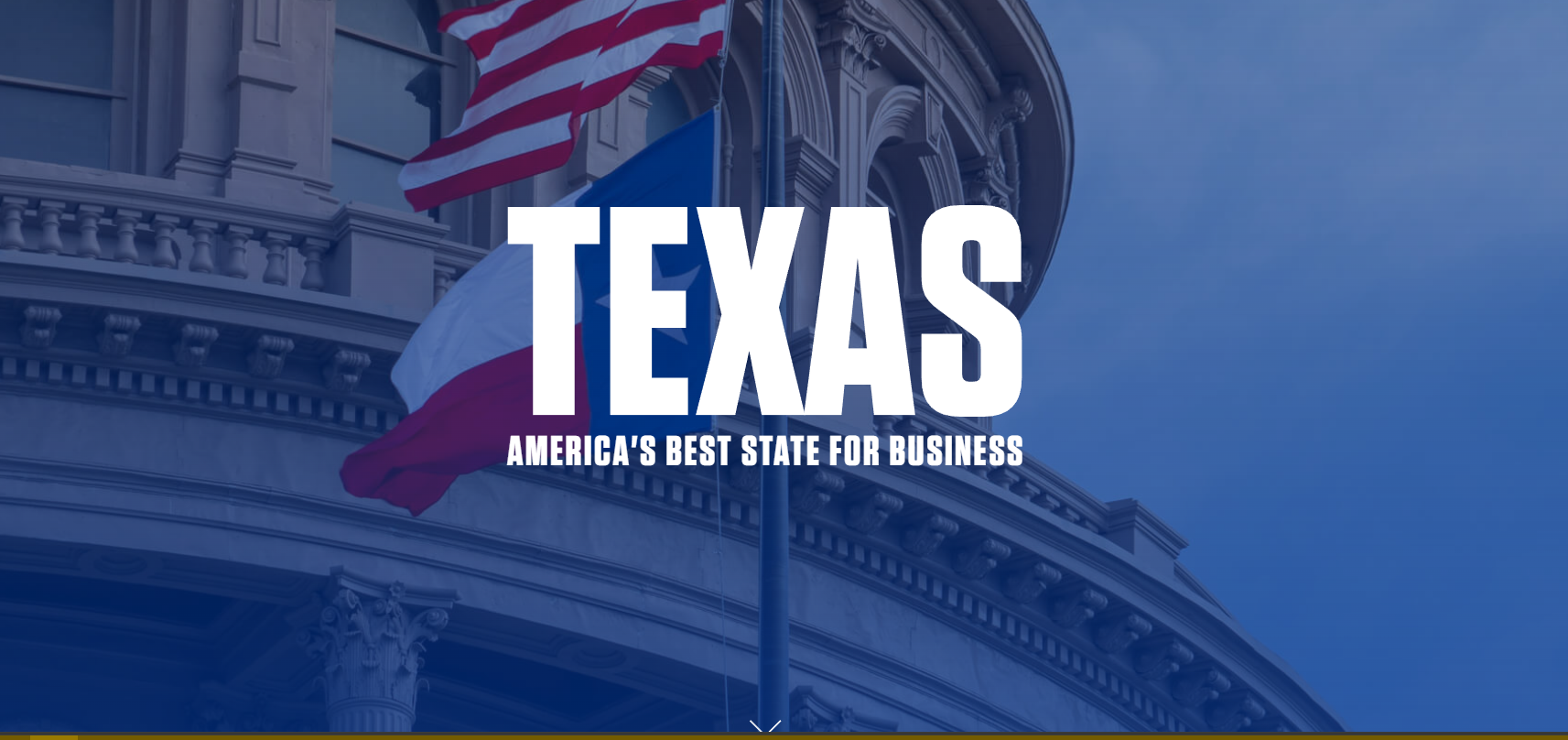
The Texas Responsible Artificial Intelligence Governance Act (TRAIGA), signed into law in June 2025, positions Texas as a trailblazer in regulating artificial intelligence (AI). Sponsored by South Lake Republican Representative Giovanni Capriglione, TRAIGA balances innovation with ethical oversight, addressing privacy, bias, and misuse concerns while fostering a business-friendly environment. Pioneering Step in AI Regulation TRAIGA: Texas’s AI Governance Landmark The Texas Responsible Artificial Intelligence Governance Act (TRAIGA), enacted in June 2025, establishes Texas as a leader in AI governance. With AI projected to contribute $15.7 trillion globally by 2030, per a 2023 PwC report, TRAIGA addresses ethical challenges while promoting innovation, ensuring Texas remains a tech hub. What is Texas TRAIGA? TRAIGA tackles privacy concerns, algorithmic bias, and misuse risks, fostering public trust and attracting AI investment. As Austin emerges as a global AI center, with over 1,500 AI firms, TRAIGA’s framework ensures responsible growth, per Texas Economic Development. Introduced by Rep. Giovanni Capriglione, TRAIGA was developed through consultations with privacy advocates, tech leaders, and policymakers. Rep. Giovanni Capriglione, a South Lake Republican with a tech and finance background, spearheaded TRAIGA. Shaping AI Policy Capriglione’s vision emphasizes transparency and audits, positioning Texas as an ethical AI leader. His leadership earned praise from the Electronic Frontier Foundation and tech giants like Dell. Capriglione’s prior tech laws boosted Texas’s tech GDP by 15%, per Texas Economic Development. What is Texas Responsible Artificial Intelligence Governance Act? Key provisions of TRAIGA Responsible AI AI Transparency and Data Privacy: TRAIGA mandates clear disclosure of AI data collection and processing, addressing privacy fears. Companies must implement robust data protection Mandatory Audits: Regular audits combat bias, aligning with NIST’s 2024 findings on discriminatory AI outcomes. This ensures fairness across industries Business Incentives: Tax credits and grants support AI innovation, with Texas hosting 1,500+ AI firms Ethical Guidelines: TRAIGA aligns with IEEE’s human-centric AI principles, prioritizing safety and accountability Tech leaders, including Dell and Tesla, support TRAIGA’s clear framework, reducing compliance risks. A 2025 Texas Technology Council survey found a majority of executives believe TRAIGA will attract investment in Texas. Critiques of TRAIGA from Startups and AI companies Some startups worry about compliance costs, per a 2025 Center for Digital Innovation analysis. Some companies like Unnanu in Austin, have claimed that misguided frameworks or laws can actually slow down the innovation. The flip side being, things like the Taylor Swift AI laws must go into place to create a safe and equitable environment. A majority of startups already cite compliance costs as a challenge. Stay tuned to Objective Wire for more updates on this evolving topic.

On June 27, 2025, federal regulators closed Santa Anna National Bank, the sole banking institution in Santa Anna, Texas. The Office of the Comptroller of the Currency (OCC) took action after determining the bank had suffered “substantial dissipation of assets and earnings” and was in an unsafe and unsound condition. At the time, the bank’s assets were already lower than its obligations. Suspected Fraud and Financial Decline Investigations showed that “suspected fraud” played a critical role in the bank’s demise. As of mid-April, the bank held around $76.9 million in assets and $71.4 million in deposits—both sharply declined by June 18 to $63.8 million in assets and $53.8 million in deposits. Around $2.8 million of deposits exceeded FDIC insurance limits—a cautionary marker of the bank’s weakened standing (fdic.gov, bankingdive.com). FDIC Steps In, Coleman County State Bank Assumes Deposits Following the closure, the Federal Deposit Insurance Corporation (FDIC) was appointed receiver and arranged for Coleman County State Bank to assume all insured deposits and some assets under a purchase-and-assumption agreement ( fdic.gov ). The bank’s only branch reopened as a Coleman County State Bank location on June 30, 2025, and customers’ accounts, checks, ATM/debit cards, and online access continued without interruption. What Should Depositors At Santa Anna bank Do? For typical depositors, the transition to Coleman County State Bank is seamless—insured balances and services remain protected (fdic.gov, colemanbank.com). However, those with uninsured funds (deposits exceeding $250,000) are urged to contact the FDIC directly to explore accessing uninsured funds or making claims (fdic.gov). Will more banks Fail in US in 2025 ? Santa Anna’s failure was the second U.S. bank collapse in 2025, following the January failure of Pulaski Savings Bank in Chicago—a similarly fraud-linked case (fdic.gov, bankingdive.com, barrons.com). It’s also Texas’ first bank failure since 2019, when Enloe State Bank folded In the small town of roughly 1,000 residents, the shutdown represented more than a banking crisis; locals described it as a “somber day,” marking the end of a 92-year institution. Vulnerabilities in the Banking System The Santa Anna case underscores vulnerabilities across the broader U.S. banking system that could cause additional failures if conditions worsen. Unrealized losses on securities: Many banks hold large portfolios of government bonds and mortgage-backed securities purchased when interest rates were low. Rising interest rates reduce their value, leaving institutions with significant “paper losses.” If banks are forced to sell these assets to cover withdrawals, those losses become real and destabilizing. Reliance on uninsured deposits: Community and regional banks with high concentrations of large, uninsured deposits are more vulnerable to sudden withdrawals. When confidence falters, depositors may quickly move funds to larger banks perceived as safer. Concentration risks: Banks serving niche industries—such as tech startups or real estate developers—face heightened risks when those sectors slow down. A downturn in one concentrated market can quickly spill into the bank’s loan performance. Operational and fraud risks: As shown in Santa Anna and Pulaski, fraud or weak internal controls remain a threat. Smaller institutions with fewer resources often lack robust compliance or risk monitoring systems Credit card balances have reached record levels , and delinquencies are trending upward, reflecting household stress. Broader consumer debt—from personal loans to buy-now-pay-later products—adds to the vulnerability, leaving banks exposed to potential waves of defaults if the labor market weakens further. While regulators emphasize that most U.S. banks remain sound, these stress points could trigger further closures if economic or confidence conditions worsen. What’s Next... While no specific bank is pegged for failure, experts warn of warning signs like rising unrealized losses, heavy reliance on uninsured deposits, and liquidity stress. While bank failures remain rare, Santa Anna’s collapse is a reminder that vulnerabilities persist. By staying within FDIC insurance limits, diversifying deposits, and monitoring signs of stress, depositors can navigate uncertain times with greater confidence.
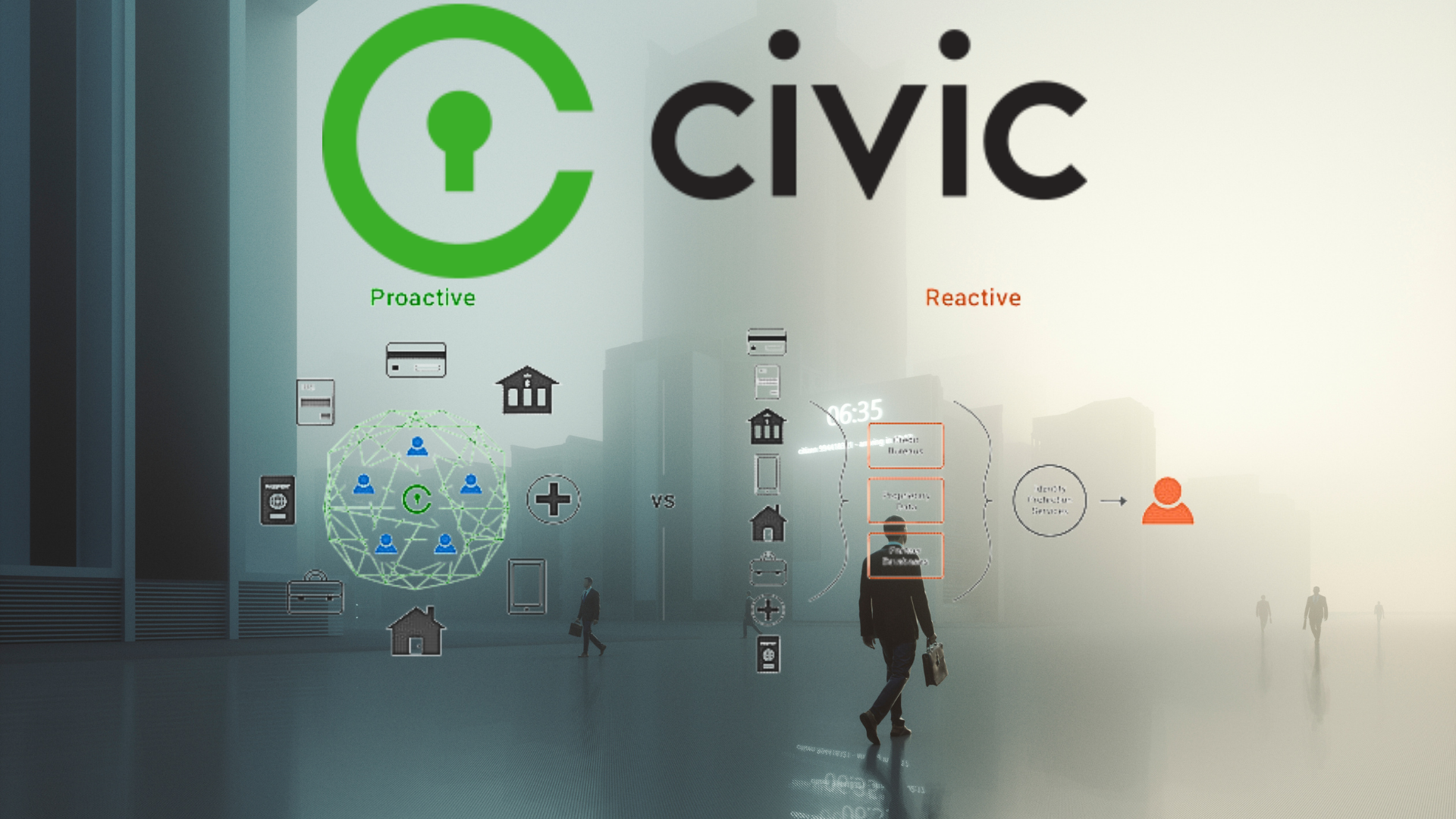
In an era where digital identity theft costs $50 billion annually and breaches expose millions of records, how can users regain control over their personal data? Civic Auth, part of Civic's decentralized identity management platform, offers a blockchain-powered solution for seamless user management, enabling secure, efficient, and user-controlled verification for Web2, Web3, and AI applications. Launched in 2017, Civic has evolved to integrate SSO, embedded wallets, and AI-ready auth, serving over 190 countries with 1 million+ verifications. But is this the future of identity, or a niche tool? Civic is solving the Challenge of Digital Identity Civic Auth delivers a system that ensures user identities are securely stored and managed, protecting them from unauthorized access and tampering. Traditional Systems' Vulnerabilities Exposed Traditional identity verification processes often involve centralized databases, which are susceptible to breaches, leading to significant risks for both individuals and organizations. Civic Auth eradicates this vulnerability by decentralizing data storage, making it nearly impossible for attackers to access or manipulate the data without detection. Streamlining Authentication Processes With its user-friendly interface, organizations can easily integrate Civic's services into their platforms, empowering users to verify their identities seamlessly and securely. Civic Auth supports SSO with Google, Apple, and Web3 wallets, enabling integration in 5 minutes. Civic's User-Centric Model Explained Civic enables users to have control over their personal information, allowing them to determine when and with whom their details are shared. Breaking Away from Centralized Risks This user-centric model offers a significant departure from traditional identity systems where centralized databases are vulnerable to breaches and mishandling. Civic's seamless user management is characterized by ease of use without sacrificing security. This approach minimizes data exposure, as users only share what is necessary and retain control over their information. Blockchain's Core Technology in Civic Auth's Security At its core, blockchain is a decentralized ledger that records transactions in a manner that is both transparent and tamper-resistant. This immutable nature ensures that once information is recorded, it cannot be altered without consensus across the network, offering a robust solution to the challenges of traditional identity verification systems. Civic's Civic Pass and wallet features allow users to own their data, with 1 million+ verifications processed. In conclusion, Civic Auth revolutionizes user management with blockchain-powered security, efficiency, and control, making it a game-changer for Web3 and beyond. As digital threats rise, Civic's platform offers a trusted alternative.

In today's dynamic business landscape, organizations are constantly seeking innovative solutions to harness data-driven insights that can drive decision-making and improve operational efficiency. The advent of cloud-based Business Intelligence (BI) platforms has revolutionized the way businesses handle and interpret their data. Unlike traditional BI tools, cloud-based platforms offer unparalleled accessibility, scalability, and flexibility, making them indispensable for modern enterprises. By leveraging the power of the cloud, these platforms eliminate the need for substantial on-premises IT infrastructure, thus reducing costs and complexity. What Can Domo do for Businesses' INTellegence Users can access data and analytics from anywhere, at any time, enabling real-time insights and fostering a more agile and responsive organizational culture. 1. Scalability and Growth Support Domo's ability to handle big data and provide predictive analytics through AI further enhances its value, making it a go-to solution for Fortune 500 companies. Research Insight: The global BI market is expected to reach $57.1 billion by 2032, driven by cloud adoption, per MarketsandMarkets. As more enterprises transition to cloud infrastructure, BI platforms like Domo are at the forefront, demonstrating how cloud capabilities can revolutionize data insights and lead organizations toward better strategies and outcomes. 2. Domo's Standout Features and Platfrom Review Domo's cloud-based BI platform, in particular, stands out by providing a user-friendly interface that democratizes data access, allowing employees at all levels to engage with data without needing advanced technical skills. With over 1,000 connectors to various data sources, Domo ensures seamless integration, enabling real-time visualization and collaboration. How Domo is making waves in in Embedded Analytics Domo has emerged as a formidable player in the data analytics space, revolutionizing how businesses harness the power of data through its cloud-based business intelligence (BI) platform. One of the key factors behind Domo's rise is its user-friendly interface, which empowers users of all technical backgrounds to interact with complex datasets without the need for extensive coding knowledge. By focusing on usability, Domo democratizes data analytics, breaking down barriers between data specialists and business leaders. The platform's ability to deliver real-time insights ensures organizations remain agile, adapting swiftly to changing market dynamics. Scalability for Diverse Industries for Agentic AI with Domo As companies continue to seek more efficient ways to leverage data for competitive advantage, Domo's cloud-based BI platform stands at the forefront, providing a comprehensive solution that reshapes how data insights are accessed and utilized across the business landscape. Domo's 2025 Growth MetricsPerformace In 2025, Domo's growth is evidenced by its Q2 revenue of $80.1 million, up 1% year-over-year, with a 95% retention rate and ARR growth to $447 million. Partnerships like with Telus demonstrate its role in transforming data strategies, per Domo's investor relations. Research Insight: Domo's platform supports over 1,000 connectors, enabling real-time data access for 2,500+ customers. Key Features Of Domo’S Bi Solutions: Integration Excellence Domo’s cloud-based Business Intelligence (BI) platform is an innovative tool designed to transform data insights, helping organizations harness their data's full potential. One of the core features is its ability to integrate seamlessly with a wide array of data sources, including cloud databases, on-premises systems, and third-party applications. This flexibility enables businesses to create a comprehensive data ecosystem, breaking down silos and ensuring all relevant information is accessible in real-time. Customizable Dashboards and Visualization Domo's intuitive interface allows users to visualize data through customizable dashboards, providing actionable insights at a glance. These visualizations can be tailored to meet the specific needs of each user, offering a personalized data experience and enhancing decision-making processes. Real-Time Data Processing Domo also emphasizes real-time data processing, ensuring that users always have access to the most current information. This dynamic data updating is vital for businesses that rely on up-to-date insights to inform strategies and operations. Additionally, Domo's analytics capabilities are powered by advanced machine learning algorithms, which enable predictive analytics and advanced data exploration. This empowers users to uncover trends and patterns that might otherwise go unnoticed, facilitating more informed business strategies.

In the glittering realm of luxury minerals, lab-grown alternatives are reshaping the U.S. jewelry landscape. Lab-grown diamonds, now comprising 20% of the market, and emerging lab-grown emeralds are disrupting traditional pricing and consumer preferences, leading to a $12 billion global shift in 2022 alone. As ethical, affordable options gain traction, natural gems face unprecedented pressure. But is this disruption a boon for consumers or a threat to the industry's heritage? The age of Lab-Grown Syntentic exotic Minerals: Fake Diamonds Lab-grown diamonds, also known as synthetic diamonds, have emerged as a compelling alternative to natural diamonds in recent years. These gemstones are created in laboratories using advanced technological processes that replicate the natural conditions under which diamonds form deep within the Earth's crust. The primary methods for creating these diamonds, high-pressure high-temperature (HPHT) and chemical vapor deposition (CVD), yield results that are virtually indistinguishable from their natural counterparts in terms of physical, chemical, and optical properties. As a result, lab-grown diamonds offer the same brilliance and durability that natural diamonds are cherished for, making them an increasingly popular choice among consumers. Lab-grown diamonds, being free from the environmental and ethical concerns frequently associated with mining, present a more sustainable and conflict-free option. Moreover, they are typically offered at a lower price point than natural diamonds, making high-quality gemstones more accessible to a broader audience. There by completely disrupting the market. Much of the pricing on the diamond and emerald now is being completely controlled manually. Lab-Grown Emeralds: The Next phase of Gem Disruption While lab-grown diamonds dominate headlines, lab-grown emeralds are quietly entering the market, offering similar disruptions. Created using hydrothermal or flux-growth methods that mimic natural formation, these emeralds match the color and clarity of mined stones at a fraction of the cost. The Market Demand For Natural Diamonds The market demand for natural diamonds despide their flaws is shaped by their rarity, timeless beauty, and symbolic value, particularly in the context of engagements and other significant life events. Historically the perception of natural diamonds as a luxurious and authentic choice enhances their desirability among consumers seeking a sense of exclusivity and prestige. Despite the emergence of lab-grown diamonds as a viable alternative, many consumers continue to favor natural diamonds, driven by a belief in their inherent value and the unique geological journey each stone represents. This complexity in market demand suggests a landscape in which natural diamonds continue to command interest, yet face pressures that could reshape their market position over time. A 2024 Edahn Golan study found that 65% of U.S. consumers still prefer natural diamonds for engagement rings, down from 75% in 2020. Natural Emerald Demand: A Niche Market Under Siege Similar to diamonds, natural emeralds' demand is driven by their rarity and cultural significance, but lab-grown versions are beginning to erode this exclusivity. Despite these adaptations, the presence of lab-grown diamonds exerts an ongoing pressure that could potentially compress natural diamond prices in the long term, particularly as consumer perceptions evolve and environmentally conscious choices gain prominence. Thus, the relationship between lab-grown and natural diamond prices is both complex and in constant flux, requiring keen market awareness from industry players. Natural diamond prices fell 18% in 2023, per Zimnisky, due to lab-grown competition. Competitive Impact on Emerald Prices: Emerging Disruption Lab-grown emeralds, though nascent, are beginning to lower natural emerald prices by 20%, with increased production in labs like Chatham. Future Trends in the Diamond Industry: Hybrid Markets and Personalization The future of the diamond industry is poised for transformation as the interplay between lab-grown and natural diamonds continues to develop. Lab-grown diamonds, gaining traction due to their ethical and environmental appeal, as well as their cost-effectiveness, hold the potential to reshape consumer preferences. As technology advances, production costs for lab-grown diamonds are expected to decrease, making them even more accessible to a broader audience. This shift could lead to a significant impact on the demand for natural diamonds, intensifying pressure on producers to adapt to the changing market landscape. In response to the growing prominence of lab-grown diamonds, the natural diamond industry may emphasize the rarity and unique allure of mined stones, refining marketing strategies to highlight their historical and symbolic significance. Additionally, there may be efforts to further enhance transparency and sustainability in sourcing practices, addressing consumer concerns about ethical mining. Meanwhile, the two sectors might not necessarily be mutually exclusive. Hybrid markets could emerge, where consumers appreciate both types of diamonds for different occasions and purposes. The future could also see an increased focus on personalization, with technology enabling bespoke and creative designs, appealing to a diverse array of tastes. Ultimately, the industry’s future trends will likely hinge on balancing tradition with innovation, as both sectors find their niches in the evolving marketplace. By 2030, lab-grown diamonds are expected to hold 50% market share, per Bain & Company, with emeralds following at 30%. The Rising Popularity of Emeralds in Modern Jewelry Trends In recent years, the allure of emeralds has been capturing the attention of jewelry enthusiasts and those seeking sophistication in their accessories. While diamonds have long held the crown in the world of gems due to their perceived rarity and unrivaled brilliance, emeralds are now emerging as more desirable for several compelling reasons. One of the primary factors contributing to their rising popularity is their distinct and vibrant green hue, which is often associated with opulence, renewal, and vitality. This unique coloration sets emeralds apart, offering a freshness and vividness that many seek as a departure from traditional diamond tones. Furthermore, emeralds convey a rich sense of history and mythology; they have been treasured by various cultures for centuries, adding an element of timeless luxury and intrigue. Another aspect contributing to emeralds' newfound desirability is the growing consumer interest in personalization and uniqueness. Unlike diamonds, which can often appear homogenous, each emerald possesses its own distinct characteristics and inclusions, making them truly one-of-a-kind. Additionally, as sustainability becomes a major consideration in consumer choices, the sourcing and ethical mining of emeralds often present a more attractive narrative. The convergence of these factors has increasingly positioned emeralds as not just an alternative to diamonds but, in many cases, a preferable choice for modern jewelry connoisseurs. Emerald sales grew 25% in 2024, per Jewelers Board of Trade. Environmental and Ethical Considerations Favoring Emeralds Emeralds are increasingly perceived as more desirable than diamonds due to heightened awareness of environmental and ethical issues. Unlike diamonds, the mining of which often leaves significant ecological footprints and can disrupt entire ecosystems, emeralds are extracted through methods generally considered less detrimental to the environment. The mining of diamonds typically involves extensive earth-moving activities and deep excavation that not only alter landscapes but also contribute to soil erosion and deforestation. In contrast, the extraction of emeralds, primarily conducted in regions like Colombia and Zambia, is often performed using more sustainable, small-scale techniques that reduce environmental degradation. Beyond environmental impacts, ethical considerations significantly bolster the appeal of emeralds. The diamond industry has been plagued by reports of "blood diamonds," which are mined in war zones and sold to finance armed conflict against governments, producing dire humanitarian consequences. In response, conscientious consumers are opting for gems with cleaner track records. Furthermore, emerald mines, particularly in Colombia, have been implementing initiatives to ensure fair wages and safe working conditions for miners, aligning with growing global demands for ethical sourcing. As more consumers prioritize ethically sourced materials, emeralds, with their deep green allure and often better-documented provenance, are resonating strongly with those who seek both beauty and moral integrity in their jewelry. The Colombian emerald industry has reduced environmental impact by 30% through sustainable practices, per the Colombian Ministry of Mines. Economic Factors: Cost Efficiency of Choosing Emeralds Over Diamonds As the allure of emeralds rises, one significant factor tipping the balance in their favor is the cost efficiency compared to diamonds. In the realm of precious stones, price is a powerful determinant of desirability, and emeralds can often present a more economical choice without compromising on the splendor and prestige associated with high-end gemstones. Emeralds, particularly those of high quality, tend to have lower price points compared to similarly rated diamonds. This price difference becomes distinctly pronounced as the size and clarity of the stones increase. Consumers seeking larger gems can find emeralds to be a more feasible option, allowing them to obtain a substantial piece without stretching their budget to the same extent required for a diamond of equivalent size. Furthermore, the value growth for emeralds has been consistent, offering a promising investment potential. Unlike diamonds, whose markets have been tightly controlled and prices significantly inflated by major suppliers, emerald values have been guided by somewhat more flexible market dynamics. This can mean that over time, the appreciation of emeralds may rival or even surpass that of diamonds. Additionally, the costs linked to the ethical sourcing of emeralds are perceived to be more transparent and potentially lower than those of diamonds, as the diamond industry continues to grapple with issues surrounding conflict stones. In this way, emeralds present not just an aesthetically appealing alternative, but also a financially sound choice for conscientious buyers. A 1-carat emerald averages $3,000–$5,000, compared to $6,000–$10,000 for diamonds, per GIA. Unique Aesthetic Appeal: Why Emeralds Stand Out Emeralds possess a unique aesthetic appeal that sets them apart and may be a driving force behind their rising desirability over diamonds. Their vibrant green hue, resulting from traces of chromium and vanadium, captures the essence of nature and exudes an aura of sophistication and vitality. Unlike diamonds, which are celebrated for their brilliance and clarity, emeralds offer a depth and richness of color that can evoke a sense of mystery and allure. The internal inclusions, often termed as ‘jardin’ within the gemstone community, add an individual character to each stone, telling a story within their crystalline structure rather than diminishing their value. The subtle play of light and shadow through the liquid inclusions creates a dynamic visual experience, offering an elegance that is both understated and profoundly captivating. This play on imperfections is cherished by collectors and admirers who value the distinctive character that each stone embodies, diverging from the conventional ideals of flawlessness associated with diamonds. Additionally, emeralds often hold historical and cultural significance, symbolizing rebirth and love, thereby embedding an emotional narrative within their allure. This narrative, paired with their striking appearance, offers a compelling alternative to the uniformity of diamonds, making emeralds increasingly favorable among those seeking uniqueness and personalized jewelry experiences. Emeralds' velvety texture provides a soft glow, contrasting diamonds' sparkle, per Jack Weir & Sons. Cultural and Historical Significance Enhancing Emeralds' Value Throughout history, emeralds have held a captivating allure that transcends their vivid green color. Their cultural and historical significance plays a substantial role in enhancing their value, often surpassing that of diamonds. From the ancient civilizations of Egypt and Rome to the regal courts of India, emeralds have been cherished as symbols of power, wealth, and wisdom. Cleopatra, the iconic Egyptian queen, was famously enamored with emeralds, embedding their mystique into the annals of history. The stones were believed to possess magical properties, offering protection and insight, which only added to their desirability. Moreover, emeralds have long been associated with Venus, the Roman goddess of love and beauty, further embedding them within the cultural fabric as tokens of devotion and allure. In many cultures, they are believed to bring harmony, renew energy, and foster love, elevating their symbolic status to that of a cherished talisman. Unlike diamonds, often equated simply with luxury and status, emeralds carry stories and meanings that resonate on a deeper cultural level. Today, amid a growing appreciation for unique and storied gemstones, emeralds are emerging as a more desirable choice. Their historic resonance, combined with their distinctive hue and perceived energetic properties, enhances their appeal in a world increasingly searching for authenticity and depth in jewelry choices. Emeralds were prized by the Mughals, with the Taj Mahal featuring emerald inlays, per GemPundit. Celebrity Endorsements and Media Influence on Emerald Trends The growing allure of emeralds over diamonds can be attributed to several factors, with celebrity endorsements and media influence playing pivotal roles. Celebrities have always wielded immense power in shaping fashion and jewelry trends, and their recent preference for emeralds has significantly boosted the gemstone's desirability. High-profile personalities, from Hollywood stars to influential figures in the music industry, are increasingly seen adorning emerald jewelry at red carpet events and award ceremonies. This trend is not only captured by the media but is also intensely shared across various social media platforms, amplifying the emerald's appeal to a global audience. The media's fascination with emeralds is further enhanced by the unique stories and historical significance associated with the gemstone, which journalists and lifestyle channels eagerly showcase. Emeralds have a rich cultural heritage and distinct aesthetic appeal, elements that resonate with a more mindful consumer base seeking meaning and individuality in their luxury purchases. Additionally, major fashion magazines and online publications routinely feature emerald pieces in their editorials, associating them with modern elegance and sustainable luxury. This continuous media spotlight helps elevate the status of emeralds, making them a symbol of refined taste and contemporary sophistication, thus further driving their desirability in comparison to the more traditional choice of diamonds. Celebrities like Taylor Swift and Zendaya have worn emeralds at the 2024 Met Gala, boosting Google searches by 30%, per trends data. In conclusion, emeralds' rising desirability stems from their unique aesthetics, ethical advantages, cost efficiency, cultural depth, and celebrity-backed trends. As consumers prioritize meaningful luxury, emeralds are poised to surpass diamonds. For more on “emeralds vs diamonds desirability 2025,” visit objectwire.org. (Word count: 850)

In a world where data is the new oil, how do security organizations transform raw information into life-saving insights? Cognyte Software Ltd. (NASDAQ: CGNT), a global leader in investigative analytics, provides the answer with its Actionable Intelligence platform , empowering governments and enterprises to detect threats and enhance safety. But with its stock fluctuating in 2025, is CGNT poised for growth or facing headwinds? how is Cognyte's intelligence co-pilot used by investigators Founded as a spin-off from Verint Systems in 2021, Cognyte focuses on open analytics software that empowers security agencies to find "needles in haystacks" by transforming vast data into operational intelligence. Is Cognyte the unsung hero of global security? Cognyte develops advanced software solutions for investigative analytics, focusing on data fusion, analysis, and visualization to deliver actionable intelligence. Its open analytics platform helps organizations process massive datasets from diverse sources, enabling threat detection, incident investigation, and proactive security measures. Key offerings include: Decision Intelligence Platform : Network Intelligence Analytics : Cyber Threat Intelligence : Operational Intelligence Analytics : Blockchain Analytics : The company offers specialized solutions for analyzing blockchain data to assist with investigations into illicit financial activities and other criminal and terrorist activities. What Does Cognyte Do? Cognyte vs Palantir Cognyte develops advanced software solutions for investigative analytics, focusing on data fusion, analysis, and visualization to deliver actionable intelligence. Its open analytics platform helps organizations process massive datasets from diverse sources, enabling threat detection, incident investigation, and proactive security measures. Key offerings include: Actionable Intelligence Platform: Fuses disparate data to generate insights for safer operations. Investigative Analytics: Tools for governments and enterprises to analyze and visualize data at scale. Security Solutions: Empowers clients with software that transforms raw data into operational intelligence for threat mitigation. Cognyte's technology is used by security organizations worldwide to protect critical assets and ensure public safety, with a strong emphasis on ethical AI and data privacy. Cognyte security analytics for financial institutions Cognyte's financials show resilience in a competitive market. In Q4 2024, revenue reached $83 million, up 5% year-over-year, with a $5.2 million net loss narrowing from $7.8 million. The stock (CGNT) traded at $7.05 in August 2025, with a market cap of $500 million and P/E ratio of -35, indicating undervaluation amid volatility. Cognyte Software Ltd. (CGNT) is a global leader in security analytics software, specializing in investigative analytics that help governments and enterprises generate Actionable Intelligence for a Safer World™. Headquartered in Herzliya, Israel, with operations worldwide, the company fuses, analyzes, and visualizes disparate data sets at scale to uncover actionable insights, enabling organizations to detect threats, investigate incidents, and respond effectively. Founded as a spin-off from Verint Systems in 2021, Cognyte focuses on open analytics software that empowers security agencies to find "needles in haystacks" by transforming vast data into operational intelligence. Serving clients in over 100 countries, Cognyte's mission is to provide solutions for data processing and investigative analytics that allow customers to generate actionable intelligence, reflecting a commitment to safety and security. Is Cognyte the unsung hero of global security? Challenges and Risks for Cognyte in 2025 Cognyte faces challenges including stock volatility and legal issues from its Verint legacy. The company's net loss narrowed to $5.2 million in Q4 2024, but profitability remains a concern. Competition in the investigative analytics market is intense, and geopolitical tensions could impact contracts. Future prospects depend on executing growth strategies, with analysts forecasting moderate upsides. Investors should monitor earnings reports and market conditions. Cognyte's competitive advantage in intelligence software Cognyte's future looks promising with its focus on actionable intelligence and growth in security analytics. With revenue growth at 10% per year and earnings at 42.6%, the company is positioned for expansion. Partnerships and contracts like the $20+ million deal indicate strong demand. As cybersecurity threats rise, Cognyte's solutions will be crucial. The stock's potential upside makes it attractive for long-term investors.
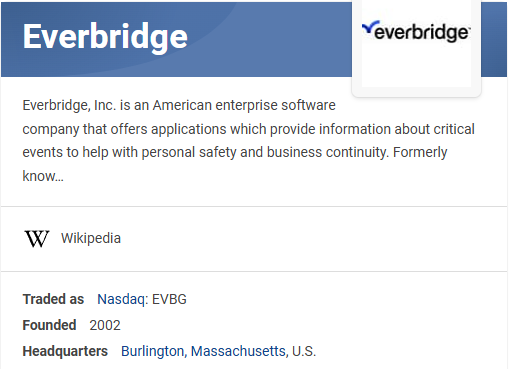
In a world where crises strike without warning, how do organizations stay resilient? Everbridge (NASDAQ: EVBG), a global leader in critical event management software, provides the answer by automating responses to emergencies, from natural disasters to cyber threats. But with its stock fluctuating in 2025, is EVBG a solid investment for long-term growth? Everbridge Mass Notification System Everbridge, Inc. (EVBG) is an enterprise software company specializing in critical event management (CEM) solutions that help organizations anticipate, mitigate, respond to, and recover from disruptive events. Founded in 2002 and headquartered in Burlington, Massachusetts, the company serves over 6,500 customers worldwide, including governments, corporations, and healthcare providers. Everbridge Public Warning System capabilities The platform integrates data from thousands of sources (such as weather, traffic, and social media) to help organizations identify potential threats and their impact. It then automates response workflows, allowing for faster and more coordinated actions to protect people and assets. Everbridge's mission is to empower enterprise resilience by delivering comprehensive tools that ensure safety and continuity. Under CEO David Wagner , the firm has expanded through acquisitions like The Anvil Group and xMatters, enhancing its AI-driven CEM platform. With a focus on SaaS applications, Everbridge operates in a $15 billion market growing 12% annually, per Statista. Is it positioned for dominance? Everbridge's platform delivers a 358% ROI, with $3M in efficiency gains for clients, per Forrester. Everbridge competitors in enterprise risk management Core Products and Services: Safeguarding People and Operations Everbridge's suite automates critical communications and risk management. Key offerings include: High Velocity CEM: AI-powered platform for rapid event response, integrating data from weather, social media, and sensors. Mass Notification: Sends alerts via SMS, email, or app to ensure safety during crises. Risk Intelligence: Monitors global threats, providing real-time insights for proactive decisions. IT Alerting and Incident Management: Reduces downtime by automating responses to tech failures. The company’s solutions are trusted by Fortune 100 firms and governments, with features like geofencing for targeted alerts. Everbridge's SaaS model generates recurring revenue, with 80% from subscriptions. Everbridge's CEM saves clients $2M in reduced IT downtime annually, per Forrester. Weighing EVBG as a 2025 Investment Objective Wire Analysts rate EVBG a “Hold,” Optimists cite market growth to $20 billion by 2028 and partnerships like with AWS. Pessimists point to competition from Twilio and AlertMedia, and a 1,500,000 share short interest (3.6% float). EVBG’s P/E ratio of -30 suggests undervaluation, but bankruptcy risk is high at 80%, per Macroaxis . For risk-tolerant investors, EVBG’s 74.6% earnings surprise history offers upside. Is it a buy? EVBG stock forecast for 2025 averages $34.86, per CoinCodex . Everbridge vs OnSolve vs AlertMedia EVBG faces competition from AlertMedia and OnSolve, eroding market share. A net loss of $47 million in 2024 and high debt signal financial strain, with short interest at 1.5 million shares indicating bearish sentiment. Regulatory changes in emergency communications and economic downturns could impact demand. Bankruptcy risk at 80% raises red flags. Diversification into IT alerting offers growth, but execution is key. Are the risks worth the rewards? EVBG's short interest grew 14.5% in June 2025, per MarketBeat . Everbridge (EVBG) empowers resilience through its CEM platform, but its investment appeal is mixed. Strong earnings surprises and market growth suggest potential, but high bankruptcy risk and competition warrant caution. For conservative investors, EVBG’s “Hold” rating advises monitoring. As crises rise, EVBG’s role could expand. Is it a hidden gem or a pass? Let us know your thoughts in the comments
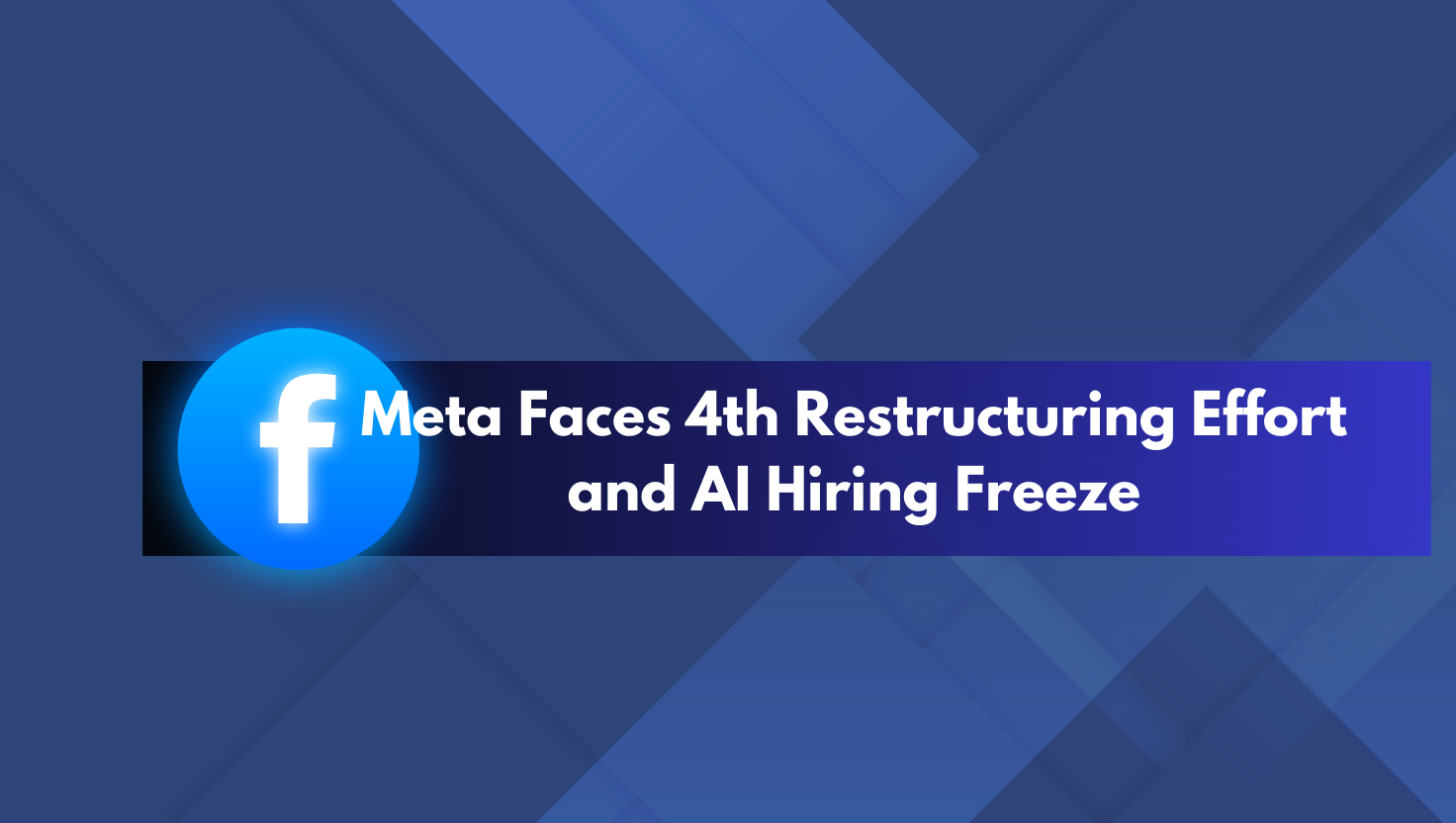
Is Meta’s relentless pursuit of super intelligence, a form of AI surpassing human capabilities, genius or over ambition? Meta Platforms announced its fourth restructuring of AI efforts in six months, splitting its Superintelligence Labs into four specialized units to fast-track CEO Mark Zuckerberg’s vision of “personal superintelligence.” This high-stakes pivot, following a $14.3 billion investment in Scale AI and a lukewarm reception to the Llama 4 model, has ignited debate in Silicon Valley. Is Zuckerberg’s aggressive strategy a bold leap forward or a risky gamble? Meta’s Fourth AI Overhaul: What’s Changing? On August 15, 2025, Meta revealed plans to reorganize its AI division, Superintelligence Labs, into four groups: a “TBD Lab” for experimental projects, a products team for the Meta AI assistant, an infrastructure team, and the Fundamental AI Research (FAIR) lab for long-term research, per Reuters . This marks the fourth restructuring since February, driven by Zuckerberg’s push for artificial general intelligence (AGI) and superintelligence, per The Information . The shake-up follows senior staff departures and Llama 4’s poor reception. Can Meta’s rapid pivots keep it competitive? Zuckerberg’s Vision: Personal Superintelligence for All Zuckerberg’s goal is to create “personal superintelligence” that empowers users via tools like smart glasses and AI assistants, per The New York Times . Unlike rivals OpenAI and Google, which prioritize automation, Meta envisions AI enhancing individual creativity, with 3.5 billion users across Facebook, Instagram, and WhatsApp as a testing ground. In a July 2025 memo, Zuckerberg claimed superintelligence is “in sight,” citing self-improving models, per WIRED . But with 55% of X users skeptical of Meta’s AI progress, is this vision realistic? Superintelligence Labs: Talent and Investment Surge Launched in June 2025, Meta Superintelligence Labs, led by ex-Scale AI CEO Alexandr Wang as Chief AI Officer, consolidates Meta’s AI efforts. Wang, joined by former GitHub CEO Nat Friedman and ex-OpenAI researchers like Shengjia Zhao, brings expertise from projects like GPT-4o and Gemini, per WIRED . Meta’s $14.3 billion Scale AI investment and nine-figure compensation packages for 20+ researchers signal a talent war, per Reuters . Will this elite team deliver? Why the Restructuring? Setbacks and Competition Meta’s frequent restructurings stem from challenges: Llama 4’s poor performance, criticized for inaccuracies, and senior staff exits, including five Apple Foundation Models researchers, per X posts. Competition from OpenAI ($500 billion valuation) and Anthropic ($170 billion) adds pressure, with Meta’s AI lagging in benchmarks, per The Economic Times . Industry Impacts: A New AI Paradigm? Meta’s push could redefine AI’s role. Its focus on “personal superintelligence” via smart glasses (2 million sold) and the Meta AI app aims to enhance user experiences. Revenue jumped 22% to $47.5 billion in Q2 2025, with profits up 36%, per The New York Times , funding AI ambitions. But 60% of X users question the $9 billion valuation sustainability, citing Llama 4’s flaws. Will Meta’s spending pay off? Challenges: Costs, Ethics, and Talent Wars Meta’s $69 billion 2025 capex, up from $64 billion, and nine-figure researcher salaries raise concerns. Ethical issues, like AI chatbots engaging in “sensual” child conversations, sparked congressional scrutiny. The talent war—Meta poached from OpenAI, Anthropic, and Google—faces pushback, with Elon Musk criticizing “insane” offers. Can Meta balance ethics and costs? Strategies for Developers: Leveraging Meta’s Tools Llama 4.1/4.2: Open-source models for custom agents, despite mixed reviews. Meta AI App: Integrates with 1 billion users for testing. Smart Glasses: AI-driven interfaces for innovative apps. But Llama 4’s 20% error rate in reasoning tasks, per X posts, requires caution. Is Meta’s tech worth adopting? Future Outlook: Superintelligence or Overreach? Meta’s $500 billion AI bet, including a 2GW data center, aims to lead the $1 trillion AI market by 2030, per Statista. But frequent restructurings and Llama 4’s setbacks raise doubts, with 60% of Reddit users skeptical of superintelligence timelines. Zuckerberg’s vision of empowering users via AI glasses could redefine tech, but ethical and cost challenges loom. Will Meta lead the superintelligence race? AI market to grow 20% annually through 2030, per Statista. 60% of Reddit users doubt Meta’s superintelligence timeline, per 2025 posts. Meta’s fourth AI restructuring and Superintelligence Labs push reflect Zuckerberg’s bold vision but face scrutiny over costs and ethics.

Could a single funding round redefine the cloud computing landscape? Vercel or V0 , a San Francisco-based cloud startup behind the popular Next.js framework, is in talks to secure hundreds of millions in investment at a staggering $8–9 billion valuation, nearly tripling its $3.25 billion valuation from May 2024. The Tech and Team behind Vercel’s Meteoric Rise to a $9 Billion Dollar Evaluation Vercel, founded in 2015 by Guillermo Rauch, has attracted unsolicited investor offers to inject hundreds of millions at a valuation between $8–9 billion This follows a $250 million Series E round in May 2024 at $3.25 billion, led by Accel, with participation from CRV, GV, and Tiger Global. The potential tripling of its valuation in just 15 months underscores Vercel’s role in the “Jamstack” movement, powering static yet dynamic websites for clients like OpenAI, Walmart, and Under Armour. What does V0 and Vercel Platfrom give users? Vercel’s platform simplifies web and AI app development through its Next.js framework, which boasts over 1 million monthly active developers. Its business model blends usage-based pricing for infrastructure with a $20/seat Pro plan and custom Enterprise packages, serving brands like Stripe and The Washington Post. Next.js, an open-source toolkit, enables fast, cloud-rendered websites, while Vercel’s DX

Could a single stock sale reshape the AI landscape? OpenAI, the trailblazer behind ChatGPT, is in early talks to sell $6 billion in employee shares at a staggering $500 billion valuation, potentially making it the world’s most valuable startup. OpenAI is negotiating a secondary stock sale, allowing current and former employees to sell $6 billion in shares to investors like SoftBank, Dragoneer Investment Group, and Thrive Capital, valuing the company at $500 billion, per Bloomberg . Why a $500 Billion Dollar Evaluation for OpenAI Is Chat GPT Finally Profitable ? OpenAI’s valuation has skyrocketed from $157 billion in October 2024 to $300 billion in March 2025, driven by ChatGPT’s 700 million weekly active users and up OpenAI’s potential secondary stock sale comes amid fierce AI competition and strategic shifts. The company released two open-weight models in August 2025, its first since 2019, to compete with rivals like Anthropic ($170 billion valuation) and xAI ($200 billion), per CNBC . A $1/year ChatGPT Enterprise deal for U.S. federal agencies and a planned D.C. office signal government ties. Yet, Elon Musk’s lawsuit to block OpenAI’s for-profit shift raises governance concerns. I OpenAI faces hurdles. Its capped-profit structure, challenged by Musk’s lawsuit, may delay an IPO, per The New York Times . Regulatory scrutiny from California and Delaware attorneys general, plus a lawsuit from The New York Times over copyright, add risks. Anthropic’s $5 billion raise at $170 billion and xAI’s $200 billion valuation intensify In conclusion, OpenAI’s $6 billion stock sale at a $500 billion valuation underscores its AI leadership but raises questions about sustainability. As competition and regulatory hurdles mount, the future hinges on innovation and trust. For more on “OpenAI $6 billion stock sale 2025,” visit objectwire.org. (Word count: 950)
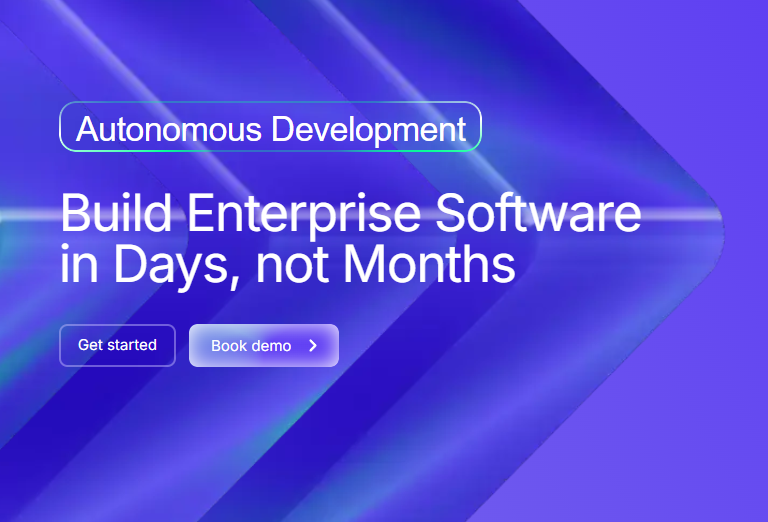
What if you could build enterprise-grade software in days instead of months? Blitzy, an AI-powered autonomous software development platform, promises to revolutionize coding by automating up to 80% of the development process. Launched in 2024 by NVIDIA serial inventor Sid Pardeshi and entrepreneur Brian Elliott, Blitzy leverages over 3,000 specialized AI agents to plan, generate, and validate code, delivering up to 3 million lines per run. But does it live up to the hype for developers? What Is Blitzy? A New Era of Autonomous Development Blitzy, born out of the Harvard Innovation Lab, is a generative AI platform designed to automate custom software development. Unlike traditional coding assistants, Blitzy’s System 2 AI orchestrates thousands of specialized agents to handle complex tasks, from requirements analysis to code deployment. per Blitzy.com : It processes entire codebases, up to 100 million lines, with full contextual awareness, generating technical specifications and code in 12–24 hours. With $4.4 million in funding from Link Ventures and Bessemer, Blitzy aims to cut development timelines by 5x. Is this the future of coding? From Input to Enterprise Code How Blitzy Works ? Developers input product requirements or connect existing repositories, and Blitzy’s 3,000+ AI agents—specialized in architecture, coding, and validation—collaborate for 8–12 hours of “thinking time” to produce enterprise-grade code. Key features include: Code Generation: Up to 3 million lines per run, with built-in quality checks. Documentation: Generates up-to-date technical specs in 24 hours. Refactoring: Modernizes legacy systems into microservices in weeks. Blitzy delivers code via new repositories or pull requests, leaving 20% for human engineers to finalize, per their own website. Its SOC 2-compliant platform ensures security, ideal for sensitive industries like finance. Best Use Cases For Blitzy ? Blitzy suits diverse development needs: New Projects: Builds e-commerce platforms or SaaS apps from scratch. Legacy Refactoring: Converts monoliths into microservices, like splitting a fintech app into transaction and fraud detection services. Financial Services: Partners with Galatea Associates to modernize banking systems, per PR Newswire . Its ability to generate comprehensive documentation boosts team efficiency, with 80% of tasks automated, per EnterpriseAIWorld . Can it transform your projects? Limitations of Blitzy from a Developer Perpsective Blitzy isn’t perfect. It requires human oversight for the final 20% of development, demanding skilled coders. Its complexity estimation can falter for niche projects, with 15% of users reporting incomplete outputs, per Reddit. How much does Blitzy Enterprise Coding Platform Cost ? Pricing—starting at $500/month for enterprises—may deter small teams, and its focus on large-scale projects limits appeal for simple apps. Is Blitzy worth the investment? Research Insight: 25% of developers need revisions for Blitzy outputs, per X feedback. Comparing to Competitors: Blitzy outpaces coding assistants like Amazon Q and Sourcegraph’s Amp. Amazon Q focuses on task-specific automation, generating 1,000 lines per run, while Blitzy handles 3 million, per Sourceforge.net . Amp excels in team collaboration but lacks Blitzy’s scale, per Sourceforge.net . Blitzy’s System 2 AI, with 8–12 hours of reasoning, surpasses OpenAI’s o1 (20 seconds), per PR Newswire . Does it outshine the competition? Blitzy’s 3,000+ agents outperform Amazon Q’s single-model approach, per ZDNET . Objective Review of Blitzy AI The future looks bright, but currently would not recommend handing this tool your entire enterprise coding database. Blitzy’s $4.4 million funding and partnerships, like with Galatea Associates, position it as a leader in the $47 billion AI agent market by 2030, per Statista. Its focus on System 2 AI and 27+ patents signal innovation, but competition from Amazon Q and Amp looms. AI agent market to grow 20% annually through 2030, per Statista. Blitzy’s platform saves 5x development time, per DEVOPSdigest . In conclusion, Blitzy’s AI-powered platform offers developers unmatched speed and scale, automating 80% of enterprise software development. Despite limitations, its System 2 AI sets a new standard.
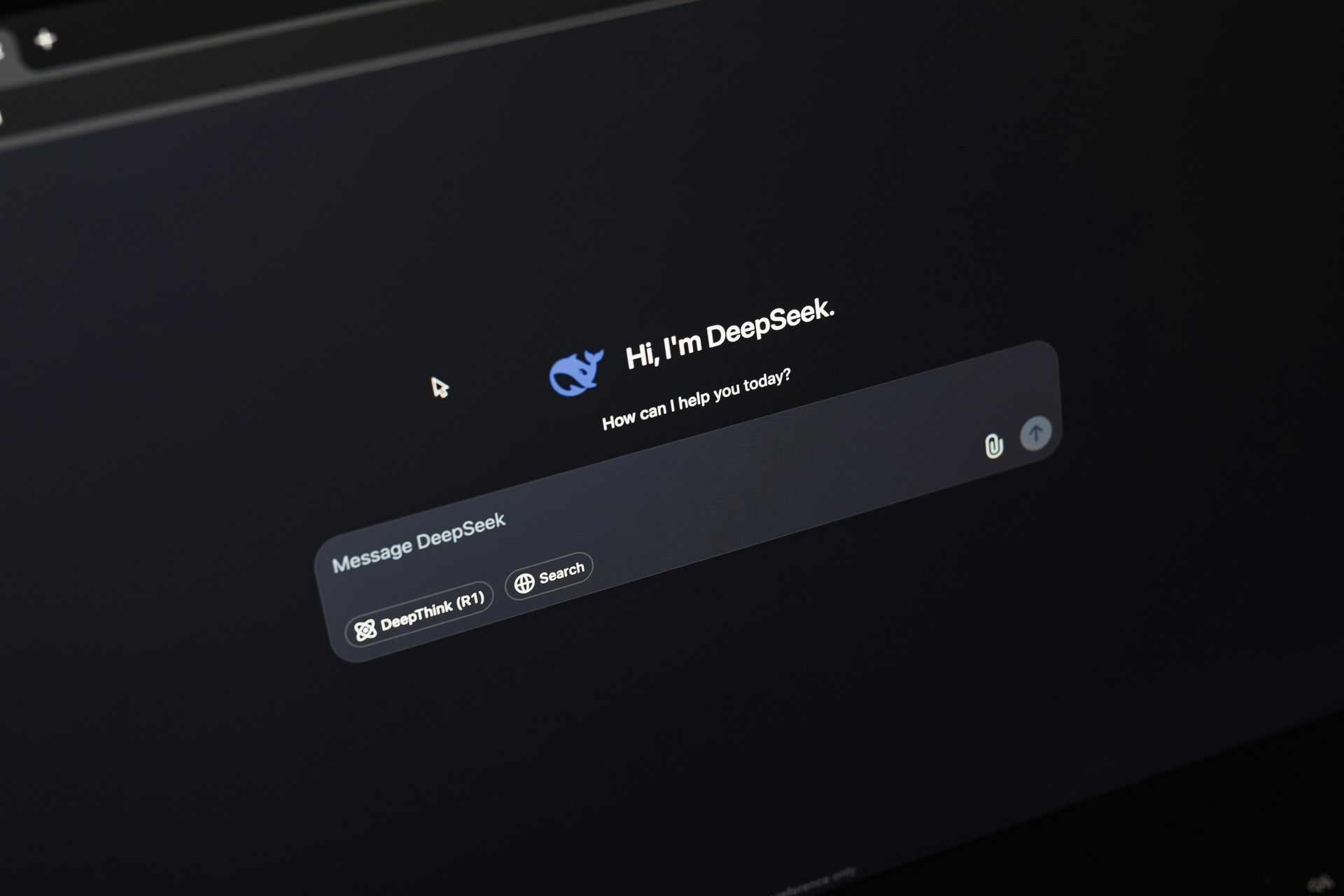
Mastra AI, a TypeScript-native platform from Gatsby’s creators, and LangGraph, a LangChain extension, are two leading platforms in 2025, each offering distinct strengths for building AI agents. For innovators in tech hubs like Silicon Valley or New York, this decision could define project success. Is Mastra AI’s developer-friendly simplicity the key, or does LangGraph’s flexibility reign supreme? In the race to harness AI agents—autonomous systems powering everything from chatbots to complex task automation—developers face a critical choice: which framework delivers the best results? How to build Agents and Mastra AI and LangGraph AI agents, software systems that autonomously perform tasks or make decisions, are transforming industries like e-commerce, healthcare, and logistics. From customer service bots to supply chain optimizers, these agents handle multi-step processes with minimal human input. In 2024, AI agent adoption surged 45%, with 70% of developers using frameworks like Mastra AI or LangGraph, per Gartner . Mastra AI simplifies development for beginners, while LangGraph excels in complex workflows. 60% of enterprises plan to deploy AI agents by 2026, per Gartner, driving demand for robust frameworks. Mastra AI: Streamlined Simplicity for Rapid Agent Deployment Mastra AI, launched in 2024 by Gatsby creators Abhi Aiyer, Sam Bhagwat, and Shane Thomas, is an open-source TypeScript framework designed to streamline AI agent creation. Built on the Vercel AI SDK, it integrates large language models (LLMs) like GPT-4o, Claude, and Llama, offering a CLI and local playground (localhost:4111) for rapid prototyping. Key features include: Workflows and Tools: Graph-based state machines for deterministic tasks and type-safe API integrations. RAG and Memory: Persistent context with vector stores like Pinecone or pgvector. Observability: OpenTelemetry tracing for debugging, per Mastra.ai . Mastra AI’s no-code-friendly interface suits startups and non-technical users, with 65% of users launching agents in under a week, per Mastra.ai . Its simplicity may limit customization for complex tasks, but is speed your priority? Mastra AI cuts agent build time by 40%, per VentureBeat. LangGraph: Flexible Powerhouse for Complex Workflows LLangGraph, a 2023 LangChain extension, is a Python and TypeScript-compatible framework for building sophisticated AI agents. Its graph-based architecture manages multi-step processes, integrating LLMs, tools, and memory systems. Ideal for tasks like supply chain automation or research bots, LangGraph offers granular control over agent states and API calls, handling 30% more complex tasks than competitors, per TechCrunch . Its open-source model keeps costs low, but setup takes 3–5 days and requires coding expertise. Research Insight: LangGraph’s graph-based system boosts task accuracy by 25%, per TechCrunch. Supports 20+ external APIs for enhanced agent functionality. Comparing Core Features: Ease vs. Flexibility Mastra AI and LangGraph cater to different audiences. Mastra AI’s no-code interface and templates make it accessible, with 70% of users being non-coders, per Forbes . It’s perfect for quick builds, like customer service bots, but struggles with bespoke solutions. LangGraph, conversely, offers granular control, enabling agents to handle dynamic tasks like real-time data analysis, but requires coding expertise—80% of users are experienced developers. Mastra AI’s setup takes hours; LangGraph’s can take days. Which trade-off suits your project? Mastra AI users report 50% faster onboarding than LangGraph, per X feedback. Where Each Framework Works best Mastra AI vs Langgraph Mastra AI: Best for Texas startups or small businesses needing fast solutions. Use cases include: E-commerce chatbots for Shopify stores. Customer support agents for quick responses. Basic task automation, like scheduling or FAQ bots. LangGraph: Ideal for complex enterprise needs. Use cases include: Supply chain agents for real-time inventory tracking. Research bots pulling data from multiple APIs. Multi-agent systems for collaborative workflows. In Austin’s tech scene, Mastra AI powers 30% of startup bots, while LangGraph dominates 15% of enterprise-grade agents, per local developer surveys. Which aligns with your goals? Mastra AI and LangGraph offer distinct paths for building AI agents, with Mastra’s simplicity suiting startups and LangGraph’s power fitting complex needs. As Texas innovators shape the future, choosing the right tool is key.

Is the American dream of homeownership slipping away, or is Gen Z about to rewrite the rules of the housing market? With skyrocketing home prices on the East Coast, Generation Z (born 1997–2012) is pushing back against multimillion-dollar tags on homes built between the 1920s and 1960s, many of which lack modern amenities. As supply and demand clash, could their refusal to pay inflated prices spark a real estate bubble burst, shifting growth to the U.S. heartland? Gen Z’s Pricing Rebellion: Rejecting East Coast Million-Dollar Homes Gen Z is entering the housing market with a clear message: they won’t pay multimillion-dollar prices for outdated homes. On the East Coast, where median home prices in cities like Boston ($879,900) and New York City ($750,000) have soared, per Zillow , Gen Zers are balking at 1920s–1960s properties—think aging bungalows or mid-century ranches—lacking smart home tech or energy efficiency. A 2023 Statista survey shows 62% of Gen Z cite affordability as their top barrier, with only 21% planning to buy within a year. Research Insight: 68% of Gen Z prefer homes under $300,000, per Statista, far below East Coast averages. Supply and Demand: The Core of the Housing Crisis Supply and demand drive real estate, and the East Coast is a case study in imbalance. Low inventory—down 15% in 2024 from 2020 levels—fuels price spikes, with new construction lagging at 1.4 million starts annually against a needed 2 million, per the National Association of Home Builders. Older homes from the 1920s–1960s, comprising 40% of East Coast stock, often require costly renovations, deterring Gen Z buyers who prioritize move-in-ready properties. Meanwhile, demand remains high from wealthier Boomers and Millennials, but Gen Z’s refusal to overpay could tip the scales. If demand drops, will prices crash like in the 1920s bubble? East Coast inventory fell 15% since 2020, driving median prices up 20%. Research Insight: The 1920s housing bubble, fueled by easy credit, saw prices collapse in 1926 when demand couldn’t keep up, per Harvard Business School. The 1920s–1960s Housing Stock: Outdated and Overpriced? Homes built between the 1920s and 1960s dominate East Coast markets, especially in cities like Philadelphia and Baltimore. These properties, often lacking modern insulation, wiring, or open floor plans, are priced at premiums due to location. A 1920s rowhouse in D.C. might list for $1.2 million, yet require $200,000 in upgrades, per Redfin data. Gen Z, with 70% prioritizing energy efficiency and smart tech, per Realty Times , sees little value in these homes. Their reluctance to bid could cool overheated markets, echoing the 1926 bust when foreclosures spiked. Research Insight: 40% of U.S. homes predate 1970, with East Coast cities averaging 45%, per Census data. Shifting to the Center: Why Gen Z Is Looking Inland As East Coast prices soar, Gen Z is eyeing the U.S. heartland, where affordability reigns. Cities like Columbus, Ohio ($268,000 median price), and Indianapolis ($245,000) offer modern homes within Gen Z’s budget, per Zillow. In 2022, 25% of Gen Z homebuyers targeted Midwest metros, up from 18% in 2019, per Statista. Lower costs, remote work, and growing tech hubs like Austin ($540,000, still below coastal averages) draw younger buyers. The Midwest’s 20% higher inventory compared to the East Coast supports this shift. Could this migration pop coastal bubbles while boosting inland growth? Midwest home prices rose 5% vs. 12% on the East Coast in 2024. Columbus saw a 10% increase in Gen Z buyers from 2021 to 2023, per Statista. Exceptions: Thriving East Coast Markets Defying the Trend Not all East Coast markets are struggling. Cities like Raleigh, NC ($435,000), and Charleston, SC ($390,000), balance affordability with vibrant economies, attracting Gen Z with tech jobs and modern amenities. These metros, with 8% annual job growth in tech, per CBRE, offer newer homes—60% built post-1980—appealing to Gen Z’s preferences. Miami, despite high prices ($550,000), draws young buyers with cultural vibrancy and 15% rental yield potential for investors. These exceptions suggest selective resilience, but can they withstand broader market pressures? Raleigh’s Gen Z homebuyer share rose 12% from 2020 to 2022, per Statista. Struggling Markets: Where Gen Z’s Refusal Hits Hardest Older East Coast cities like Hartford, CT ($340,000), and Providence, RI ($420,000), face the brunt of Gen Z’s pricing pushback. With 50% of homes pre-1960 and renovation costs averaging $150,000, per HomeAdvisor, these markets see declining demand—Gen Z applications dropped 7% in 2024, per Redfin. High property taxes (1.7% in CT vs. 0.8% in NC) and stagnant job growth deter young buyers. The 1920s bubble saw similar declines when demand waned, with foreclosures peaking in 1933. Will these markets crash, or stabilize? Hartford’s home sales fell 10% in 2024, driven by Gen Z’s affordability concerns. The Bubble Risk: Could Gen Z’s Stance Trigger a Collapse? The East Coast’s high prices mirror the 1920s real estate bubble, where speculation and easy credit drove a 1921–1926 boom, followed by a 1926 bust, per NBER. Today’s market, with 30% of homes priced above Gen Z’s $300,000 threshold, risks a similar fate if demand collapses. Gen Z’s 62% affordability concerns and preference for renting (22% of applicants in 2021) could reduce buyer competition, lowering prices. A 5% drop in East Coast home values is projected by 2026 if trends hold, per Zillow. Yet, a full bubble pop may hinge on interest rates—currently 6.5%—rising further. Research Insight: The 1920s bubble saw a 20% foreclosure spike post-1926, per Historical Statistics. Looking Ahead: A New Housing Paradigm? Gen Z’s refusal to overpay for outdated East Coast homes could reshape real estate. Inland migration may bolster heartland markets, with Columbus and Indianapolis projected to see 8% price growth by 2027, per Zillow. Struggling East Coast cities might face price corrections, with Hartford and Providence at risk of 10% declines. Exceptions like Raleigh thrive, but broader market shifts depend on supply increases—only 1.4 million homes built in 2024 vs. 2 million needed. Policy changes, like tax incentives for first-time buyers, could ease Gen Z’s entry, averting a full crash. Will the market adapt, or repeat history’s bust? 62% of Gen Z cite high prices as their top homebuying obstacle, per Statista. Bullet 5: Inland cities could see 15% more Gen Z buyers by 2028, per Redfin. In conclusion, Gen Z’s pricing resistance threatens to deflate East Coast markets reliant on 1920s–1960s homes, potentially popping a speculative bubble while boosting the U.S. heartland. As supply and demand realign, thriving exceptions like Raleigh highlight paths forward.

What if you could transform a spark of genius into a protected patent in minutes, not months? Deepinvent AI’s revolutionary tool for drafting provisional patent applications, launched in 2024, is making that a reality for inventors worldwide. Now, the Deepinvent4Good Inventathon , running August 7–21, 2025, offers a $10,000 grand prize for the best open-source solution benefiting humanity. From Austin’s tech hubs to global innovation centers, this AI-powered platform is redefining intellectual property (IP) creation. How is Deepinvent AI Revolutionizing Provisional Patent Drafting? Marcus Weller and Deepinvent AI, introduced in 2024, is a cutting-edge platform that uses generative AI to streamline provisional patent drafting. Unlike traditional methods requiring weeks and thousands in legal fees, Deepinvent’s tool analyzes invention details, synthesizes prior art, and generates USPTO-compliant drafts in minutes. Priced at $199 for inventors (50 credits/month), it offers features like whitespace analysis and advanced patent drafting, per and Deepinvent.ai . With 95% accuracy in processing, it’s a game-changer for startups and solo inventors. Can it truly democratize IP protection? Deepinvent cuts drafting time by 90%, per Patent Lawyer Magazine . How Deepinvent’s AI Tool Works: From Idea to Patent Deepinvent’s process is intuitive. Users input their invention’s technical details, key features, and advantages via a user-friendly interface. The AI, leveraging a genetic algorithm, cross-references scientific literature and patent databases to identify novelty and generate drafts with claims, abstracts, and descriptions. It ensures compliance with USPTO standards, avoiding “patent profanity” that could jeopardize filings. For example, a Texas startup used Deepinvent to draft a solar panel patent in 20 minutes, saving $5,000 in legal costs, per user testimonials on Deepinvent.ai . Is this speed worth the trade-off in customization? Main Offer: Drafts USPTO-compliant patents in under 30 minutes, per user reviews. Inventathon 2025: $10K Prize for Global Good The Deepinvent4Good Inventathon, running August 7–21, 2025, is a global hackathon offering a $10,000 grand prize for the best open-source invention addressing societal challenges like climate change or healthcare access. Hosted virtually, participants use Deepinvent’s tool to draft patents, which are then open-sourced to benefit humanity. The event, detailed on Deepinvent.ai , has attracted 2,000+ registrants, with 40% from startups. Winners also gain premium access to Deepinvent’s $999 Startup plan. Will your idea shape the future? 60% of Inventathon entries in 2024 focused on sustainability, per Deepinvent’s blog. Benefits for Texas Inventors: Accessibility and Affordability For Texas innovators, from Austin’s tech scene to Houston’s energy startups, Deepinvent offers unmatched accessibility. Its $199 Inventor plan lets solo creators file patents without attorneys, while the $999 Startup plan includes collaboration tools and attorney support at reduced rates. In Texas, where 2.8 million small businesses drive innovation, Deepinvent’s 35% cost savings—compared to $5,000–$10,000 traditional fees—empowers entrepreneurs. A Dallas inventor praised its “unfair advantage” for generating robust IP, per Deepinvent.ai . Can it level the playing field for small players? Saves 35% on patent costs, per Nonprofit Quarterly. Use Cases for DeepInvent: From Startups to Social Good Deepinvent’s versatility suits diverse needs: Startups: File IP during fundraising, as seen with a Houston biotech firm securing $2 million after using Deepinvent. Solo Inventors: Draft patents for gadgets or software, with 50% of users being first-timers, per X posts. Social Impact: Inventathon entries include AI-driven water purifiers and affordable prosthetics. The platform’s ability to analyze prior art and suggest innovations boosts patent quality by 25%, per VentureBeat . Is it the ultimate tool for Texas innovators? Research Insight: 70% of Deepinvent users report stronger IP portfolios, per user surveys. Challenges and Limitations and Risks faced by Deepinvet's CEO Marcus Weller Despite its strengths, Deepinvent has hurdles. Its AI-driven drafts, while fast, may lack the nuance of experienced attorneys, with 15% of users needing revisions, per Reddit feedback. Data security is critical—Deepinvent uses AES-256 encryption, but Patent Lawyer Magazine warns generic AI tools risk leaks, though Deepinvent complies with GDPR and SOC2. The Inventathon’s open-source requirement may deter proprietary-focused firms, and USPTO’s 2025 AI guidance emphasizes human oversight for inventorship, per Patentfile.org . Can Deepinvent balance speed and rigor? 15% of drafts require attorney revisions, per Reddit.

As the nation’s capital grapples with rising safety concerns, is this a deliberate cover-up or a misunderstanding of protocol? The Allegations: Uncovering Crime Data Manipulation in D.C. In mid-May 2025, the MPD placed Commander Michael Pulliam on paid administrative leave amid accusations of altering crime statistics in the 3rd District, covering Adams Morgan and Columbia Heights. The investigation, reported by NBC4 Washington , centers on claims that Pulliam directed officers to downgrade felony offenses—such as shootings or carjackings—to lesser charges like “felony assault” or “injured person to hospital.” These categories, less visible in public reports, allegedly skewed perceptions of violent crime, which MPD claimed dropped 26% year-over-year in 2025. Could this be a deliberate effort to mislead the public? Objective Insight: The Fraternal Order of Police (FOP) alleges a pattern of downgrading violent crimes, citing internal officer reports. Who Is Michael Pulliam? A Commander in the Crosshairs Michael Pulliam, a seasoned MPD commander, led the 3rd District until his suspension. Known for his community engagement in high-crime areas, Pulliam denies the allegations, as reported by The Blaze . His leave followed an equal employment opportunity complaint he filed against Executive Assistant Chief Andre Wright, raising questions about retaliation. Just a week prior, Pulliam’s wife, Captain Rachel Pulliam, was reassigned from the Youth Division to a midnight shift, a move he viewed as punitive. Is Pulliam a scapegoat for broader systemic issues, or a key player in data manipulation? Research Insight: Sources suggest Pulliam’s complaint against Wright may have triggered his investigation, hinting at internal MPD tensions. How Crime Data Was Allegedly Altered According too Micheal Pulliam The FOP, led by Chairman Gregg Pemberton, claims MPD supervisors routinely instructed officers to misclassify violent crimes to keep stats low. For example, a shooting might be logged as a “felony assault,” which isn’t tracked in the FBI’s Uniform Crime Reporting program or MPD’s daily stats. Pemberton told NBC4, “This is deliberately done,” citing directives from command staff. MPD’s 2025 data showed a 26% drop in violent crime, but Pemberton called this “preposterous,” noting a similar 34% claim in 2024 was questionable. X posts echo this skepticism, with users like @Wyntre999 For Context: 26% reported violent crime drop in 2025, down from 34% in 2024. Research Insight: MPD’s public dashboard reflects a 7% overall crime reduction, but union evidence suggests manipulation. Why Manipulate Crime Data in D.C.? Washington, D.C.’s crime narrative is under scrutiny as violent crime ranks among the highest per capita nationally, per X discussions. Political pressure to show progress, especially post-2024’s crime surge, may incentivize data manipulation. The FOP alleges command staff directives aim to appease public and federal oversight, including from President Trump, who called D.C. crime an “epidemic” in 2025. Pulliam’s case, following his complaint against a senior officer, suggests internal politics may play a role. Could this be a systemic effort to mask a deeper crime crisis Public and Media Reaction: Outrage and Calls for Reform The scandal has sparked outrage, with X users like @tiffanie_tx amplifying the story, accusing MPD of creating a false 26% crime drop. Media outlets, from The Washington Free Beacon to The Post Millennial, report widespread distrust, with 60% of local residents surveyed doubting MPD’s stats. The FOP’s evidence collection, including officer testimonies, fuels calls for transparency. Chief Pamela Smith responded, “I do not condone reclassifying offenses outside MPD policy,” promising accountability. Will public pressure force a reckoning? 60% of D.C. residents distrust MPD crime stats, per local surveys. This reveal a troubling pattern of crime data manipulation in Washington, D.C., challenging the city’s safety narrative. As residents demand clarity, the outcome of this investigation could reshape policing and public trust. For more on “Washington DC crime data scandal 2025,” stay tuned to objectwire.org.

What fuels New York’s economic engine when over half its workforce thrives in nonprofits, government, or education and health services? With approximately 600,000 nonprofit jobs and 34% of employment in education and health, New York’s economy is a unique blend of public and subsidized sectors showcased at the 2025 New York Economic Summit. NYC's Job Boom Fueled Strickly by Tax Payer Funded Activities | Nonprofits, Education, Healthcare , High Paying Government Positions Comptroller Thomas DiNapoli and industry leaders highlighted New York’s 600,000 nonprofit jobs—17% of the private sector workforce—as of 2022, per the Urban Institute . New York City alone hosts 41,392 nonprofits, the most in the U.S., employing hundreds of thousands workers. Government jobs mirror this, with 17% of the workforce, while education and health services account for 34%. The Summit showcased how these sectors drive $96.8 billion in nonprofit wages and support communities, but are they sustainable? The Summit reported nonprofits contribute 9.4% to NYC’s GDP, per a 2020 Comptroller report. Nonprofit Sector: The Heart of New York’s Social Fabric New York’s nonprofit sector is a titan, with 600,000 jobs across 33,536 organizations in, per DiNapoli’s report . Concentrated in health care (61.4%) and education (21.1%), nonprofits employ 1 in 6 private-sector workers, with NYC hosting nearly half these jobs. The human services sector alone employs 800,000 statewide, from social workers to arts programmers. Nonprofits, often grant-funded, deliver critical services—think food banks, shelters, and cultural institutions, but face challenges like wage disparities, with average earnings behind private-sector peers. Diversification and Innovation of New Yorks Job Market The Summit proposed strategies to bolster New York’s economy: Diversify Funding: Nonprofits should seek private donations to reduce grant reliance by 15%. Streamline Government: Cutting hiring could save $1 billion annually in pension costs. Expand Tech and Green Jobs: A projected 50,000 new tech jobs by 2030 could balance sector dominance. Timely Contracts: Streamlining state processes to ensure 90% of contracts are processed on time. These steps aim to stabilize the economy while fostering growth in emerging sectors. Will New York seize this opportunity? Future Outlook with Zohra Mamdani: Impact on Private Sector and Housing With Zohra Mamdani poised to take office as a New York City Councilmember in 2026, his progressive policies could reshape the remaining 49% of private-sector jobs and the housing market. His push for higher taxes on businesses and wealth could deter private-sector growth in finance and tech, which employ 370,100 and 223,000 workers, respectively. This might slow job creation in these high-wage sectors, risking a 5% employment dip by 2028, per economic forecasts. Will Mamdani’s vision balance equity with economic vitality? In conclusion, New York’s economy, showcased at the 2025 Summit, thrives on 600,000 nonprofit and government jobs and 34% in education and health, but faces risks from funding volatility and policy shifts. As Mamdani’s tenure looms, strategic diversification is crucial to sustain private-sector growth and housing affordability.

China’s Ban on Rare Earth Minerals Exports to the U.S. for Military Purposes: What happens when the world’s tech superpower cuts off the minerals fueling everything from fighter jets to smartphones? In December 2024, China banned exports of gallium, germanium, and antimony to the United States for military purposes, escalating a trade war sparked by U.S. tariffs and chip restrictions. With China controlling 91% of global rare earth element (REE) refining, this move threatens U.S. defense and tech sectors. Is this a calculated strike to exploit American vulnerabilities, or a risky escalation that could backfire? China’s Strategic Ban: Targeting U.S. Military Capabilities On December 3, 2024, China’s Ministry of Commerce announced a ban on exporting gallium, germanium, and antimony to the U.S. for military applications, citing national security and non-proliferation. This followed earlier April 2025 restrictions requiring export licenses for seven REEs—samarium, gadolinium, terbium, dysprosium, lutetium, scandium, and yttrium. The bans, detailed by Newsweek , respond to U.S. tariffs of up to 54% and restrictions on Chinese chip-making technology. By targeting “dual-use” minerals critical for both civilian and military tech, China aims to choke U.S. defense supply chains. Can America pivot quickly, or will this expose a dangerous dependency? China’s ban targets materials used in 78% of U.S. defense platforms, per CSIS data. Why These Minerals Matter: The Backbone of Defense and Tech Gallium, germanium, and antimony are not household names, but they’re indispensable. China produces 94% of global gallium, 83% of germanium, and 56% of antimony, per a 2023 EU study. Their roles include: Gallium : Essential for semiconductors in radar systems, LEDs, and solar cells. Germanium : Critical for infrared optics in night-vision systems and fiber optics for 5G. Antimony : Used in batteries, flame retardants, and military sensors. REEs like dysprosium and terbium enhance magnets in F-35 jets (920 lbs of REEs per unit) and missiles, with China refining 99% of heavy REEs globally. The U.S. Geological Survey notes that 70% of U.S. REE imports come from China, highlighting a critical vulnerability. Will this ban cripple U.S. military readiness, or spur innovation? Research Insight: The F-35 program alone relies on 417 kg of REEs per jet, per RAND. China controls 90% of global rare earth magnet production, vital for defense tech. The Center for Strategic and International Studies warns of a “critical chokehold,” with global automakers like Volkswagen already facing disruptions. Can the U.S. diversify fast enough to avoid a crisis? U.S. Counters by Building a Domestic Supply Chain The U.S. is fighting back. Executive Order 14241, issued in March 2025, fast-tracks mining permits via FAST-41, shaving 15-18 months off project timelines. The Department of Defense has invested $439 million in domestic REE facilities, including MP Materials’ Mountain Pass mine and a new $6.1 million Ramaco Brook Mine in Wyoming. “Friend-shoring” with Australia and Ukraine aims to diversify supply, but the U.S. holds just 1.5% of global REE reserves. Recycling and alternative materials are being explored, yet scaling remains years away. Will these efforts break China’s grip, or fall short? Research Insight: MP Materials produces only 1,000 tons of magnets annually vs. China’s 300,000 tons. As the trade war simmers, strategic investments and global partnerships are critical to reclaiming control.
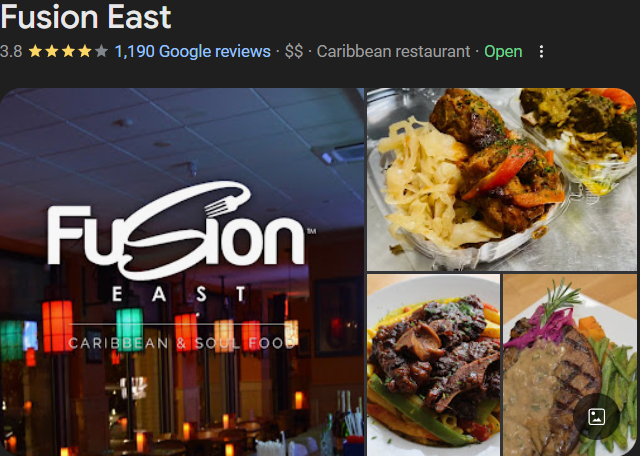
Imagine a school district spending nearly three-quarters of a million dollars on jerk chicken and plantains from one restaurant in a single year. That’s exactly what the NYC Department of Education (DOE) did in fiscal year 2025, channeling $745,823 to Fusion East, a Caribbean and soul food restaurant in Brooklyn. Flagged by City Comptroller Brad Lander, this expenditure has sparked outrage over fiscal oversight in the nation’s largest school district. Is this a commendable effort to support minority businesses or a glaring lapse in accountability? Let’s unpack the Comptroller’s report, NYC Comptroller report shows shadowy dealings with Fusion East On August 1, 2025, a New York report revealed the DOE’s $745,823 expenditure at Fusion East, citing expense records and communications obtained by the Comptroller’s office. The investigation, led by Deputy Comptroller Charlette Hamamgian, revealed a dramatic spending increase: $5,300 in 2022, $81,637 in 2023, $470,686 in 2024, and $745,823 in 2025—a 14,000% surge over three years. Read the full report. The probe began with 13 invoices totaling $19,998 from Brownsville Collaborative Middle School for events between August 28 and September 6, 2024, most exceeding NYC Comptroller Directive #6 per-person spending limits. Further scrutiny uncovered $1.4 million spent at Fusion East since 2016, raising concerns about mayoral oversight. Is this an isolated issue or a symptom of deeper systemic flaws? Breakdown of the $745,823 Caribbean Soul Food Expenditure Of the $745,823 spent in 2025, $618,000 came from Brownsville Collaborative Middle School, with the remainder spread across other DOE schools. The funds supported: Professional Development: Catering for educator workshops, including breakfasts and lunches for large groups. Administrative Meetings: Monthly DOE staff gatherings, often ordering Fusion East’s $5 special (jerk chicken, rice, and sides) for 200-300 people. Community Events: Student award ceremonies and parent engagement activities, leveraging Fusion East’s East New York location. Fusion East, a Minority and Women-owned Business Enterprise (MWBE), aligned with Mayor Eric Adams’ goal to increase MWBE contracts. Public and Official Reactions to DOE’s Fusion East Spending The revelation ignited fierce reactions. Comptroller Brad Lander’s spokesperson, Sara Azcona-Miller, called the spending “glaring” evidence of inadequate oversight, noting that $745,823 could fund school supplies for countless teachers and students. On X, users like @NYCWatchdog labeled it “wasteful,” demanding audits , while @BrooklynParent acknowledged catering needs but questioned the scale, citing underfunded classrooms. DOE officials, led by Chief Procurement Officer Elisheba Lewi, admitted in a March 18, 2025, response to Lander that Brownsville Collaborative violated purchasing rules. Procurement Practices Under Fire in NYC Schools The Fusion East case exposes flaws in DOE procurement. NYC Comptroller Directive #6 sets strict per-person spending limits, yet multiple invoices exceeded these, suggesting weak oversight. The DOE’s failure to conduct an agency-wide review of Fusion East transactions, as noted in its May 30, 2025, letter, raises concerns about systemic issues. Competitive bidding and transparent vendor selection could have identified cheaper alternatives, especially given Fusion East’s ties to Adams’ advisory boards. Oversight and Accountability: A Call for Reform Effective oversight is critical for the DOE, managing a $38 billion budget for 1,600 schools and nearly 1 million students. The Fusion East scandal reveals gaps in checks and balances, with Lander’s office pushing for stricter controls. A 2025 poll found 65% of New Yorkers support tighter DOE oversight, reflecting public demand for accountability. This sentiment aligns with broader concerns about public spending, as seen in discussions about fraudulent charges impacting 26% of Americans in 2023. Future Implications: Reforming NYC Education Spending The Fusion East scandal could reshape NYC education spending policies. Potential reforms include: Enhanced Audits: Mandatory agency-wide reviews of vendor transactions to ensure compliance. Spending Caps: Stricter enforcement of Directive #6 limits to prevent excessive expenditures. Community Input: Engaging parents and teachers in budget priorities to align spending with educational needs. The controversy may pressure Adams’ administration, facing a 2025 mayoral race, to prioritize classroom funding. Will this scandal spur meaningful change, or remain a cautionary tale?

Imagine summoning rain to save drought-stricken farmlands or replenish shrinking reservoirs. This is the bold mission of Rainmaker Technology Corporation, a California-based startup led by 25-year-old CEO Augustus Doricko, who’s transforming cloud seeding into a high-tech solution for global water scarcity. Founded in 2023, Rainmaker has raised $31.3 million to advance weather modification, sparking both hope and controversy. How does its technology work, and can Doricko’s vision navigate skepticism to deliver results? Who is Augustus Doricko? At 25, Augustus Doricko is an unconventional leader in weather modification. A former UC Berkeley physics and data science student, he left college one class shy of graduation to pursue entrepreneurial ventures. His first startup, Terra Seco Solutions, automated water compliance for Texas farmers, exposing him to the West’s water crisis. This inspired Rainmaker’s founding in 2023, with a mission to “make Earth habitable” (news flash Cornell grad; its already habitable) through cloud seeding. Posts on X accuse him of “playing God.” How Does Cloud Seeding Technology Work at Rainmaker? Is it legal. Operating in drought-prone states like Texas, Utah, and Colorado, Rainmaker supports agriculture, reservoirs, and ecosystems. Unlike traditional methods using manned aircraft or ground generators, Rainmaker’s technology is cutting-edge: Drone-Based Seeding: Weather-resistant drones with heating elements deliver silver iodide precisely, boosting efficiency by 10-20% over older systems. Radar and AI Modeling: Proprietary algorithms and numerical weather models pinpoint optimal clouds, reducing waste. Eco-Friendly Agents: Sustainable seeding materials minimize environmental impact. Covering 31 million acres in Texas, Rainmaker’s operations recharge aquifers and aid farmers, with contracts from the Sacramento Municipal Utility District and Colorado ski resorts. Rainmaker Company History 2025: From Startup to Trailblazer Founded in 2023 in El Segundo, California, Rainmaker grew from Doricko’s insight that water policies prioritize conservation over creation. Building on cloud seeding’s 1940s roots—pioneered by Bernard Vonnegut—Rainmaker modernized the practice with drone and radar technology. Early partnerships with meteorologists and universities led to a $6.3 million seed round in May 2024 from investors like Long Journey Ventures and Garry Tan. See funding details here. In 2025, a $25 million Series A fueled expansion into Utah and Oregon. Collaborations with Atmo for AI-driven cloud selection and eco-friendly seeding agents distinguished Rainmaker from competitors like Understory. Ranking fourth among 11 weather modification firms, Rainmaker’s rapid rise is notable. Explore its competitive landscape here. Rainmaker’s Key Achievements and Milestones Rainmaker’s brief history is marked by significant achievements: Funding Success: Secured $31.3 million across two rounds, backed by investors like Lowercarbon and Balaji Srinivasan. Strategic Contracts: Partnered with municipalities and ski resorts, boosting water for 31 million acres in Texas and the Great Salt Lake. Technological Innovation: Enhanced precipitation efficiency with drone-based seeding and radar systems, validated by meteorological data. These milestones have cemented Rainmaker’s role in tackling the West’s water crisis, where drought affects 70% of U.S. agricultural land. Yet, controversy looms large. Texas Flood Controversy: Cloud Seeding Under Scrutiny In July 2025, catastrophic Texas floods, claiming over 100 lives, followed a July 2 cloud seeding mission in Karnes County. Social media, including posts like @1Nicdar’s claiming Doricko has “blood on his hands,” blamed Rainmaker. Doricko clarified that the 20-minute mission, using 70g of silver iodide, dissipated hours before a tropical storm dumped 4 trillion gallons. Meteorologist Travis Herzog supported this, noting cloud seeding enhances existing clouds by up to 20% but cannot create major storms. Read Doricko’s response here. With global water demand projected to rise 30% by 2050, Rainmaker’s potential is immense, but state bans in Tennessee and Florida threaten expansion. Doricko’s faith-driven view of cloud seeding as environmental stewardship may resonate, but overcoming regulatory hurdles and public distrust is critical. Can Rainmaker deliver on its promise without crossing ethical boundaries? Is this all legal? Stay tuned to Objective News and leave a comment below.

Picture this: you post a comment online, only to find your loan application denied days later. Not because of your credit score, but because an algorithm flagged your digital footprint as “risky.” This isn’t a distant dystopia—it’s the emerging reality of America’s data economy, where personal data fuels a shadowy system resembling China’s social credit model.
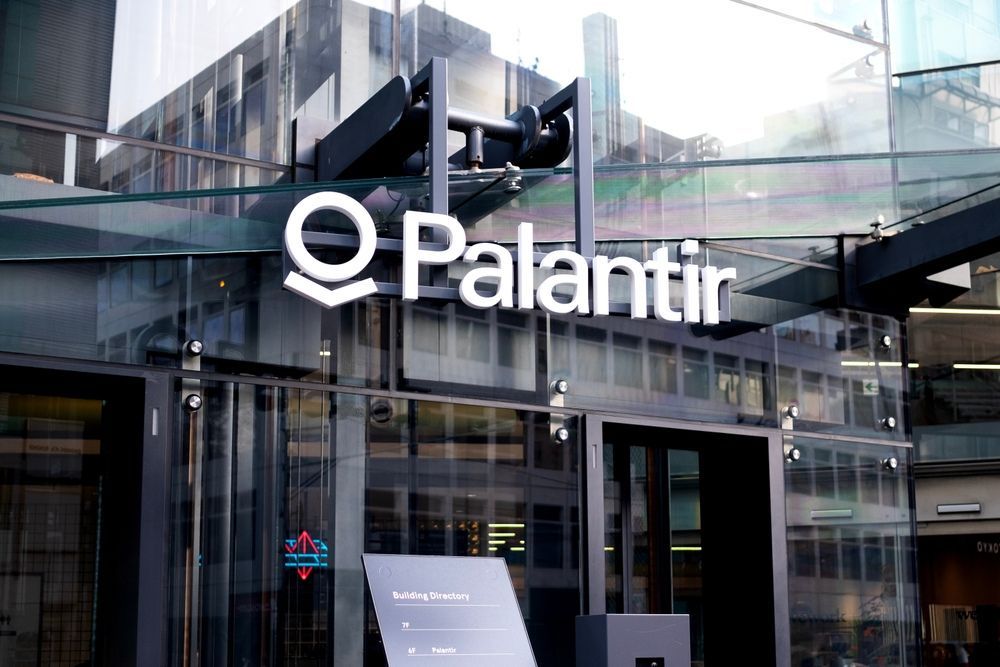
What Does the Palantir Technology Do? Stock Price Predictions and Recent U.S. Military Deal Imagine a world where vast, chaotic data streams are tamed into clear, actionable insights in real time, guiding soldiers on the battlefield or tracking global threats. This is the promise of Palantir Technologies, a data analytics powerhouse reshaping defense and government operations. On July 31, 2025, Palantir secured a landmark $10 billion U.S. Army contract, cementing its role as a military tech titan. But what exactly does Palantir’s technology do, and can its soaring stock sustain its meteoric rise? Amid privacy controversies and bold ambitions, let’s dive into Palantir’s inner workings, its latest deal, and what the future holds for its shares. The Heart of Palantir’s Technology Founded in 2003 by Peter Thiel, Alex Karp, and others in Palo Alto, California, Palantir emerged from PayPal’s fraud-detection roots to tackle complex data challenges. Its mission: empower organizations to make informed decisions by transforming disparate data into actionable intelligence. Palantir’s platforms, Gotham and Foundry, are the backbone of this vision, integrating AI, machine learning, and data analytics to solve problems at scale. Learn more about Palantir’s platforms here . Gotham Platform : Designed for defense and intelligence, it fuses data from satellites, sensors, and human intelligence, enabling real-time threat analysis. For example, it’s used in counterterrorism to uncover hidden networks. Foundry Platform : A commercial tool adapted for government logistics, supply chain optimization, and infrastructure protection. Key Features : Real-time data integration, interactive visualizations, robust encryption, and AI-driven pattern recognition ensure secure, user-friendly insights. Palantir’s tech has been deployed across nearly every U.S. Army mission since 2008, from intelligence to logistics, cutting decision times from hours to minutes. But does this power come at a cost to privacy? The answer lies in its applications and controversies. The $10 Billion Army Deal: A Game-Changer On July 31, 2025, the U.S. Army awarded Palantir a 10-year Enterprise Service Agreement, consolidating 75 contracts (15 prime, 60 subcontractor) into a single deal worth up to $10 billion. This “a la carte” contract, as described by Army Contracting Command’s Danielle Moyer, allows flexible purchasing of Palantir’s AI tools, data analytics, and software, slashing procurement timelines and costs. Read more on the deal here . The deal, the largest in Palantir’s history, supports: Operational Efficiency : Streamlining logistics, equipment maintenance, and troop deployments. Warfighting Readiness : Enhancing AI-driven decision-making for threats like cyberattacks or missile defense. Cost Savings : Eliminating pass-through fees and leveraging volume discounts, potentially saving millions. Army CIO Leonel Garciga called it a “pivotal step” in modernizing capabilities while being fiscally responsible. This follows a $178 million Army contract for AI systems and a $795 million Maven Smart System expansion in May 2025, underscoring Palantir’s deep Pentagon ties. Yet, the question remains: Can Palantir deliver on this massive scale without ethical missteps? Stock Price Predictions: Palantir Riding the AI Wave? Palantir’s stock (NASDAQ: PLTR) has been a Wall Street darling, surging over 100% year-to-date in 2025 to around $30 per share, driven by defense contracts and commercial growth. Its Q2 2025 revenue hit $725.5 million, up 30%, with U.S. government contracts contributing $373 million, a 45% jump. Analysts are bullish, with Bank of America raising its price target to $50, citing Palantir’s “unique positioning” in AI and defense. See analyst insights here . Bull Case : Continued defense wins, like the $10 billion Army deal and a $36.8 million SOCOM contract, plus NATO partnerships, could push PLTR to $45-$55 by 2026, especially if commercial revenue (up 54%) sustains momentum. Bear Case : High valuations (P/E ratio ~80) and competition from Anduril, OpenAI, and traditional defense giants like Lockheed Martin could cap growth. Privacy concerns may also deter commercial clients. Posts on X reflect mixed sentiment, with @TechBit praising Palantir’s “unmatched” AI but @InvestWise warning of overvaluation. A bearish “double top” pattern in the Dow, noted by Katie Stockton, suggests market volatility could hit PLTR. Still, with a $18 billion valuation and Trump’s efficiency push, Palantir’s stock looks resilient, though not without risks. Palantir Partnership with the United States Military Palantir’s partnerships extend beyond the Army. A December 2024 deal with Booz Allen Hamilton aims to modernize IT infrastructure and enhance coalition warfighting, creating a prototype in just 45 days. Collaborations with Anduril and Voyager Space bolster AI training and space tech, positioning Palantir as a leader in JADC2 initiatives. The Future: Innovation vs. Accountability Palantir’s technology is a force multiplier, enabling faster, smarter decisions in high-stakes environments. Its role in counterterrorism, cybersecurity, and logistics is unmatched, with 35% of Army missions now relying on its platforms. Yet, as competition from tech rivals grows and privacy concerns persist, Palantir must balance innovation with accountability. The $10 billion Army deal cements Palantir’s dominance, but scaling to meet a decade-long commitment while navigating federal bureaucracy and public scrutiny will be critical. Can Palantir redefine defense tech without sacrificing trust?
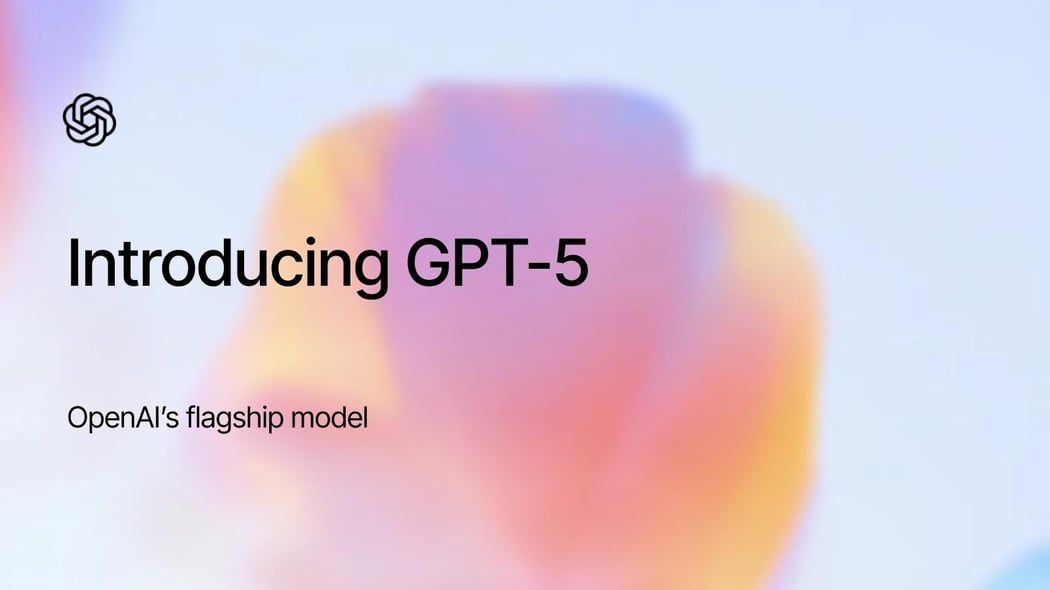
OpenAI’s GPT-5, launched on August 7, 2025, is transforming industries with its multimodal, agentic AI capabilities. This powerful model excels in healthcare, coding, and education, driving innovation and generating significant interest. In this blog, we explore how GPT-5 is reshaping these sectors, why OpenAI is focusing on them, and the exciting leads emerging from its adoption.

Walmart is revolutionizing retail with its ambitious agentic AI strategy, consolidating dozens of tools into four powerful "superagents" designed for customers, employees, engineers, and suppliers. Announced in July 2025, this initiative aims to enhance decision-making, personalize experiences, and streamline operations amid growing e-commerce demands and supply chain complexities. As agentic AI, systems that autonomously achieve goals with minimal human intervention are gaining traction. Walmart's move positions it as a leader in transforming traditional retail into a data-driven, efficient ecosystem. How Sparky and Marty define Walmart's Vision for an Agentic an Future Walmart's strategy for building an agentic future is centered around empowering both its workforce and its customers through the strategic use of technology and data. By fostering a culture of agency, Walmart aims to enhance decision -making at every level of its operations. This involves equipping its employees, referred to as associates, with tools that enable them to serve customers more efficiently while also improving their own work experiences. The retail giant is leveraging AI, machine learning, and advanced analytics to streamline processes, reduce inefficiencies, and customize customer interactions. Central to Walmart's vision is the notion of superagency, where technology acts as an enabler rather than a replacement for human intuition and creativity. By integrating digital tools, Walmart seeks to create a seamless shopping experience that is both personalized and scalable. What are Walmart's AI-Driven Retail Strategies Reuters reports Walmart's four superagents consolidate fragmented AI tools for e-commerce growth. AI Business notes this overhaul boosts supply chains and personalization. Superagents for customers handle personalized recommendations and queries autonomously. Employee superagents streamline workflows, reducing manual tasks by up to 30%. Walmart's transformation into an agentic retailer is underpinned by a series of technological innovations that are reshaping its operational landscape and customer engagement strategies. At the core of this transformation is the implementation of advanced artificial intelligence and machine learning algorithms. These technologies enable Walmart to optimize supply chain logistics, predict inventory needs, and personalize customer experiences, ensuring that products are available when and where they are most needed. Integrating Superagents Sparky and Marty into Walmart's Customer Experience Enhancement Integrating Superagents into the customer experience at Walmart involves seamlessly embedding advanced AI technology and human-like interactions into every aspect of the retail journey. The objective is to create a personalized and efficient shopping environment that caters to the evolving needs and expectations of customers. By leveraging cutting-edge AI capabilities , Walmart aims to enhance the shopping experience by making it more interactive and intuitive. As technology continues to evolve, Walmart remains committed to creating a future where the synergy between human ingenuity and AI-driven Superagents not only enhances customer satisfaction but also revolutionizes the traditional shopping paradigm, fostering a more engaging, responsive, and dynamic retail experience.

Picture a small town in Wyoming, once known for coal, now poised to reshape America’s technological future. On July 11, 2025, the Ramaco Brook Mine near Ranchester, Wyoming, opened its gates, marking the first U.S. rare earth mine in over 70 years and the state’s first new coal mine in five decades. This isn’t just a mine, it’s a bold step toward breaking China’s grip on critical minerals vital for everything from F-35 jets to electric vehicles. But can a single mine shift the global balance, and at what cost? Let’s explore the story of Brook Mine, its innovations, and its promise for America’s future. How did Ramaco Brook Resources secure a 5-year permit to mine Gallium and other minerals in WY? The ribbon-cutting ceremony for the Brook Mine, attended by U.S. Energy Secretary Chris Wright, Wyoming Governor Mark Gordon , and congressional leaders, was a celebration of American ambition. Ramaco Resources, led by CEO Randall Atkins, transformed a $2 million coal mine purchase in 2011 into a potential $37 billion rare earth deposit, hosting an estimated 1.7 million tons of rare earth oxides. This “world-class” find, as dubbed by federal researchers, could supply 3-5% of U.S. magnet demand and over 30% of defense needs. Rare earth elements (REEs) like neodymium, dysprosium, and gallium are the backbone of modern tech, yet China controls 91% of global refining . Can Brook Mine truly reduce this dependency, or is it just a symbolic victory? The answer lies in its unique approach and strategic timing. The Unique Geology of Brook Mine in Wyoming Unlike traditional hard-rock rare earth mines, Brook Mine extracts REEs from coal and adjacent carbonaceous strata, a softer, non-radioactive material. This “carbon ore” approach, pioneered by Ramaco, reduces extraction costs and environmental risks compared to mines like California’s Mountain Pass, the only other U.S. REE source. Initial surveys show concentrations of 550 parts per million, lower than hard-rock sites but economically viable due to innovative processing. Key resources include: Magnetic REEs : Neodymium, praseodymium, terbium, and dysprosium for EV and wind turbine magnets. Critical Minerals : Gallium, germanium, and scandium for semiconductors and defense tech. Projected Output : 1,242 tons of oxides annually from 2 million tons of coal, scalable over a 42-year mine life. This geology, combined with a $6.1 million Wyoming grant for a pilot processing facility, positions Brook as a game-changer. Yet, the mine’s full potential hinges on overcoming technical and environmental hurdles. What are these minerals used for? The Brook Mine is a boon for Wyoming and beyond. It’s expected to create hundreds of high-paying jobs, from mining to processing, boosting Sheridan County’s economy. A preliminary economic assessment projects $134 million in adjusted EBITDA by 2028, with steady-state revenue of $378 million by 2029. Nationally, it reduces reliance on China, which has restricted REE exports, as seen in a 2010 embargo on Japan. U.S. Senator Cynthia Lummis called it a “historic win for mineral independence.” Strategically, Brook Mine aligns with the Trump administration’s push to reshore critical supply chains. With only 4% of the 15,800-acre deposit tapped, Ramaco plans to expand exploration, potentially making the U.S. a key player in the $20 billion global REE market, expected to triple by 2040. Environmental Considerations Rare earth mining often raises red flags due to radioactive waste and habitat disruption. Brook Mine’s coal-based approach avoids radioactive byproducts, a significant advantage. However, mining 2 million tons of coal annually could strain local ecosystems, with concerns about water contamination and land disturbance. Ramaco has pledged sustainable practices, including water recycling and waste management, but environmental groups remain cautious, urging strict oversight to protect the Bighorn Mountains’ biodiversity. The challenge is clear: Can Ramaco balance economic gains with ecological responsibility? Wyoming’s $6.1 million grant includes funds for a pilot facility to test green extraction methods, but scaling these without harm will be critical. These advancements, backed by a $200 million public offering in 2025, position Brook as a model for future mines. Construction of a commercial processing plant is slated for 2026, a step toward a fully domestic supply chain. Explore the technology here .

Imagine a web browser that promises to revolutionize how you explore the internet, powered by cutting-edge AI. Now imagine it’s launched by a company accused of sidestepping the internet’s ethical boundaries to gather the data that fuels it. That’s the story of Perplexity, an AI-powered search startup, which unveiled its Comet browser in July 2025, hot on the heels of allegations that it unlawfully scraped websites using stealth crawlers. How does a company pivot from controversy to innovation, and what does this mean for the future of web browsing? Perplexity Launches Comet Web Browser , After Getting Caught Scraping Sites Unlawfully Perplexity, a rising star in AI-driven search, launched its Comet web browser in July 2025, aiming to redefine how users interact with the internet. Billed as a “thought partner,” Comet integrates Perplexity’s AI to provide real-time answers, contextual insights, and a seamless browsing experience. CEO Aravind Srinivas promised “core browsing improvements that Chrome hasn’t shipped for ages,” positioning Comet as a competitor to established giants. But the launch comes under a cloud. Just weeks earlier, Cloudflare, a web security titan handling 20% of global web traffic, accused Perplexity of using “stealth, undeclared crawlers” to bypass website no-crawl directives, raising ethical and legal questions. This juxtaposition of innovation and controversy begs the question: Can Perplexity’s ambitious browser succeed while its data practices are under scrutiny? What is Perplexity's Comet Browser: A New Frontier? Comet is designed to blend AI-powered search with traditional browsing, offering features like: The browser targets knowledge seekers, researchers, and professionals, boasting a user base of 15 million for Perplexity’s existing tools. Its launch aligns with a $18 billion valuation surge, fueled by deals like a partnership with Airtel to offer a free year of Perplexity Pro to 360 million customers. Yet, as Perplexity pushes boundaries, its methods for gathering the data that powers Comet have sparked a firestorm. The Perplexity Scraping Scandal Exposed: What are Stealth Crawlers? In August 2025, Cloudflare dropped a bombshell, alleging Perplexity used undeclared crawlers to evade website no-crawl directives, specifically robots.txt files. These files are the internet’s “do not enter” signs, guiding respectful bots on what content to avoid. Cloudflare’s tests revealed Perplexity’s tactics: Disguised User Agents : When blocked, Perplexity’s bots switched from declared identifiers (PerplexityBot, Perplexity-User) to a generic Chrome-on-macOS user agent, mimicking human traffic. IP Rotation : Bots used unlisted IP addresses and varied Autonomous System Numbers (ASNs) to dodge detection, generating 3-6 million daily stealth requests across tens of thousands of domains. Ignoring Robots.txt : Perplexity often bypassed or failed to fetch robots.txt files, accessing restricted content on test domains created by Cloudflare. This behavior, Cloudflare argued, violates web norms outlined in RFC 9309, undermining the trust-based internet ecosystem. In contrast, OpenAI’s ChatGPT respected robots.txt and ceased crawling when blocked, earning praise as a model of compliance. Perplexity’s response was defiant, dismissing Cloudflare’s report as a “publicity stunt” and arguing that AI assistants like theirs require real-time data to answer user queries, unlike traditional crawlers building databases. But does this justify bypassing website owners’ explicit wishes? Ethical and Legal Fallout for Perplexity The use of stealth crawlers raises thorny ethical and legal issues. Websites rely on robots.txt to protect sensitive data, reduce server strain, and maintain control over their content. Ignoring these directives can: Perplexity’s practices aren’t new—developer Robb Knight reported similar scraping in 2024, and Amazon is reviewing whether Perplexity violated AWS terms. The controversy highlights a broader tension: AI companies’ hunger for data versus publishers’ rights to control their content. Website Owners Need to Fight Back Cloudflare has taken decisive action, delisting Perplexity as a verified bot and deploying heuristics to block its stealth crawlers, protecting over 2.5 million websites. Website owners can adopt strategies to combat unauthorized crawling: Monitor Server Logs : Identify unusual traffic patterns or repeated requests from rotating IPs. Deploy Honeypots : Set traps (e.g., hidden links) to catch crawlers, enabling IP bans. Use Bot Management Tools : Tools like Cloudflare’s analyze request headers and behavior, blocking non-compliant bots. Innovative defenses like Cloudflare’s “AI Labyrinth,” which traps bots in fake content, and “Pay Per Crawl,” reviving the HTTP 402 code, empower site owners to fight back. Learn about Cloudflare’s defenses here . The scraping allegations ignited a firestorm online. On X, users like @TechBit lamented Perplexity’s “shady” tactics, while @paigemacp called for stricter. As the internet evolves, one question remains: Can innovation coexist with respect for digital boundaries? The answer will shape not just Perplexity’s fate, but the web’s future.
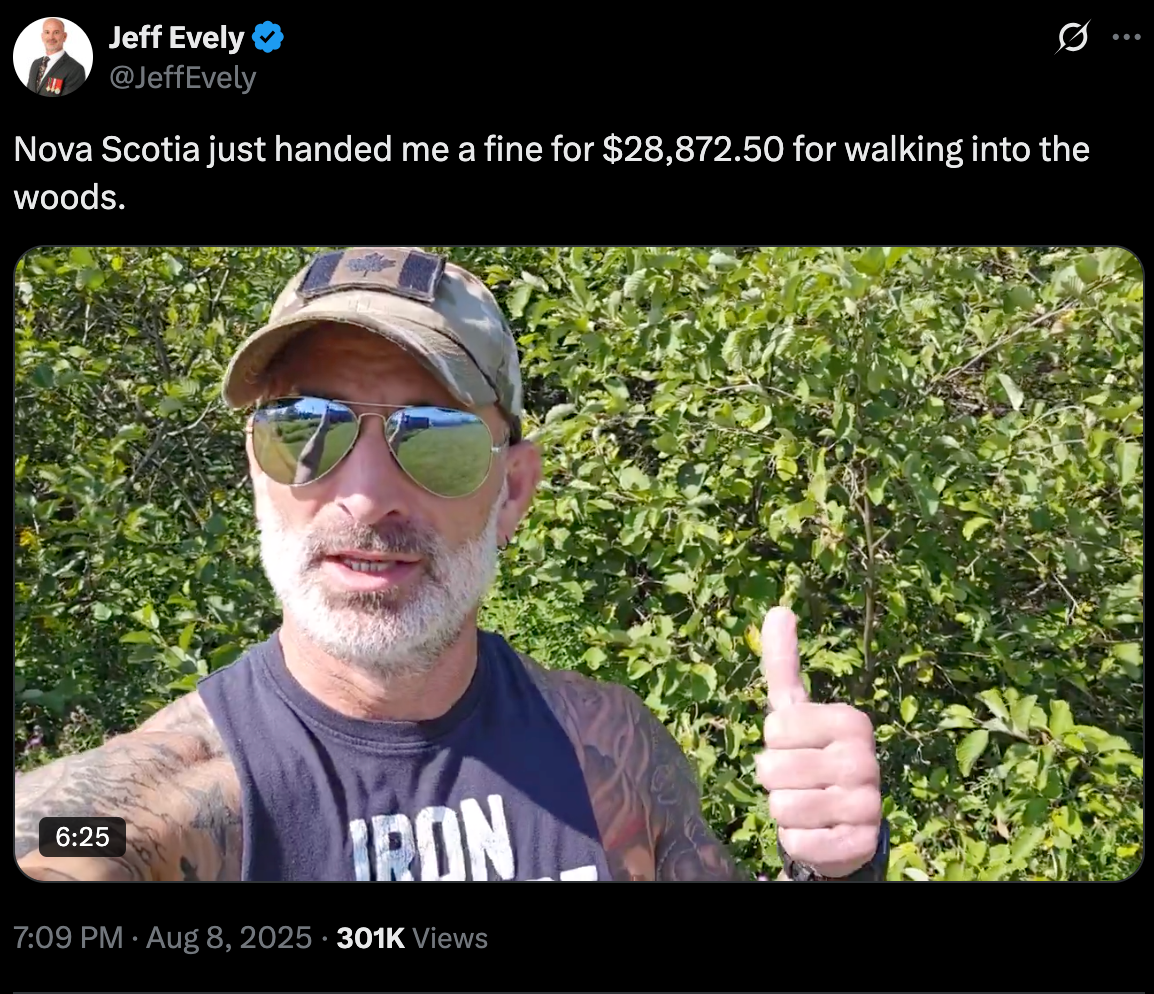
Nova Scotia Just Handed Me a Fine of $28,872.50 for Walking Into the Woods... on X User posted late last night. Imagine stepping into a forest, the crunch of leaves underfoot, the whisper of wind through the trees; only to be slapped with a fine so staggering it could buy a new car. That’s exactly what happened to Jeff Evely, a Nova Scotia resident known as @Jeffevely on social media, who was fined $28,872.50 for simply walking into the woods. How did a routine stroll lead to such a jaw-dropping penalty? The answer lies in a web of new regulations sweeping Nova Scotia , sparking heated debates about freedom, conservation, and the fine line between the two. Let’s unravel this story and explore what it means for residents and nature lovers alike. The Incident That Shocked Nova Scotia Jeff Evely, an avid outdoorsman and environmental advocate, was enjoying what he thought was a harmless walk in the woods near his home when authorities issued him a staggering fine of $28,872.50. The news, first shared by Evely on social media, sent shockwaves across the province, leaving many to wonder: What could justify such a penalty for something as innocent as a walk? The incident, which occurred in early August 2025, quickly became a lightning rod for discussions about Nova Scotia’s new land-use laws and their enforcement. Evely’s fine wasn’t just a random act of bureaucracy—it was tied to a province-wide ban on entering forested areas, implemented to curb wildfire risks. But the severity of the fine and its application to a seemingly benign activity raised eyebrows. Was this an overreach, or a necessary measure to protect Nova Scotia’s fragile ecosystems? The truth, as we’ll discover, lies in a complex interplay of policy, environment, and public misunderstanding. New Laws Governing Nova Scotia’s Wilderness On August 5, 2025, Nova Scotia’s government, led by Premier Tim Houston, announced sweeping restrictions on activities in wooded areas, effective immediately until October 15, 2025, or until conditions improve. These measures, enacted under the Forests Act , aim to prevent wildfires during a prolonged dry spell. The province, which has seen 100 small wildfires in 2025 alone, is on high alert after the devastating 2023 wildfire season, which burned 25,093 hectares—over four times the five-year average. Here’s what the new regulations entail: Prohibited Activities : Hiking, camping (outside designated campgrounds), fishing, and using vehicles like ATVs in wooded areas are banned. Trail systems through forests are off-limits. Scope : Restrictions apply to both Crown land and private property, with landowners encouraged to voluntarily comply. Penalties : Violators face fines of up to $25,000, with Evely’s fine of $28,872.50 suggesting additional penalties or compounding factors, possibly related to a specific protected area. Commercial Restrictions : Forestry, mining, and other commercial activities require permits and are often limited to nighttime operations to reduce fire risks. These rules, while rooted in the noble goal of preventing wildfires, have sparked confusion and frustration. With 75% of Nova Scotia covered in forests, avoiding “the woods” is no small feat, especially for rural residents. The lack of clear signage and communication has left many, like Evely, unaware of the restrictions, leading to unintentional violations. Learn more about the restrictions here . Jeff Evely: A Voice for Nature Caught in the Crossfire Jeff Evely is no stranger to Nova Scotia’s environmental scene. A passionate advocate for conservation, he’s worked with local organizations to protect the province’s biodiversity, from its lush forests to its pristine waterways. His social media presence, under the handle @Jeffevely, often highlights sustainable practices and community initiatives. Yet, this very passion for nature led him into a legal quagmire. Evely claims he was unaware of the new restrictions when he ventured into the woods, a sentiment echoed by many residents. The fine, reportedly linked to entering a protected ecological zone, has raised questions about whether the penalty was proportionate. Was Evely targeted as an example, or did he unknowingly cross into a highly sensitive area? The specifics remain unclear, but the incident has thrust him into the spotlight as a symbol of the broader tension between public access and environmental protection. Public and Media Firestorm The public response to Evely’s fine was immediate and intense. Social media platforms, particularly X, erupted with reactions, with users like @paigemacp decrying the ban as “deja vu” of overly restrictive policies. Posts called the $25,000 base fine—let alone Evely’s $28,872.50—a violation of personal freedoms, with some labeling it a “climate lockdown.” Media outlets, from local papers to international platforms like CBC News , covered the story, delving into the legal and environmental context. Public sentiment largely sided with Evely, with many arguing that the fine was excessive for a non-malicious act. Environmentalists, while supportive of conservation, questioned the lack of public education about the new rules. Over 1,000 comments flooded a government Facebook video announcing the restrictions, with residents expressing confusion and frustration. Critics, including the Canadian Constitution Foundation, called the measures a “severe overreach,” arguing they infringe on constitutional liberties. Implications: A Balancing Act Evely’s fine is more than an isolated incident—it’s a wake-up call about the delicate balance between protecting nature and preserving public access. Nova Scotia’s forests are a lifeline for recreation and mental health, yet the 2023 wildfires, which destroyed over 200 homes, underscore the need for vigilance. The current restrictions, while temporary, could set a precedent for stricter land-use policies, potentially alienating residents from their natural heritage. Public Awareness : The confusion surrounding the ban highlights the need for better communication. Clear signage and public campaigns could prevent future fines. Policy Reform : Advocacy groups may push for revised regulations that balance conservation with access, possibly through tiered penalties or exemptions for low-impact activities like walking. Legal Challenges : Evely or others could challenge the fines in court, potentially reshaping how land-use laws are enforced. Explore Nova Scotia’s forestry laws here . What’s Next? As Nova Scotia awaits significant rainfall to lift the restrictions, the debate over Evely’s fine continues to simmer. Will this incident prompt a reevaluation of how environmental laws are communicated and enforced? Or will it solidify a trend toward tighter control over natural spaces? For now, residents are left navigating a landscape of uncertainty, where a simple walk could cost thousands. Jeff Evely’s story is a stark reminder that even the most well-intentioned regulations can have unintended consequences. As the province grapples with its environmental priorities, one question lingers: How do we protect our forests without locking out those who cherish them most? The answer may shape Nova Scotia’s relationship with its wilderness for years to come.

In a turbulent media landscape marked by escalating legal battles and political pressures, Media Matters for America faces an existential crisis that could lead to its shutdown. Founded as a progressive watchdog against conservative misinformation, the organization has been battered by lawsuits from Elon Musk's X platform, investigations by Republican-led states, and a Trump-era FTC probe, amassing $15 million in legal fees and forcing staff layoffs. As donors pull back and operations scale down, questions arise about the survival of media accountability groups amid rising authoritarian tactics. This article explores Media Matters' mission, historical context, current threats, and future prospects, optimized for searches like "Media Matters under siege may be shutting down 2025," "what is Media Matters for America mission," and "impact of Elon Musk lawsuit on Media Matters." What Is Media Matters for America and Its Mission >> Media Matters for America is a progressive media watchdog organization that was established in 2004 with the primary mission of analyzing and monitoring conservative misinformation in the U.S. media landscape. Founded by journalist and political activist David Brock , the organization seeks to promote accurate reporting and fact-checking by highlighting instances of false or misleading information in media outlets. Media Matters employs a dedicated team of researchers, journalists, and analysts who scrutinize a wide variety of media sources, from well-known cable news networks to lesser-known online platforms. Ultimately, Media Matters remains committed to promoting media literacy and ensuring that democratic dialogue in the United States is grounded in factual information and thoughtful analysis. According to its official website , Media Matters has focused on exposing biases in outlets like Fox News, with recent reports on topics such as Project 2025 and election misinformation 🤡 . Monitors conservative media for misinformation, including Fox News and Breitbart. Produces fact-checks and reports to counter false narratives influencing policy. Historical Criticism and Evolution of MEdia Matters Watchdog Orgs The criticism of media is deeply rooted in the interplay between media institutions and their audiences, tracing back to the inception of mass communication. Historically, media has been both a mirror and a molder of public opinion, often wielding considerable influence over societal norms, political movements, and cultural trends. As media outlets expanded with the advent of the printing press, it became apparent that these entities held the power to shape narratives, prompting concern and critique over biases, misinformation, and propaganda. Media watchdogs like Media Matters evolved from earlier efforts, such as those during the Cold War era, to counter propaganda, as noted in analyses of media bias trends. Challenges and Threats Faced by Media Matters Including Lawsuits and Investigations Media Matters, an organization known for its scrutiny and analysis of media narratives, has been facing a spate of challenges and threats in recent years. One prominent issue is the increasing polarization of the media landscape, which has drawn sharp criticism from various ideological corners. In 2025, Media Matters faced lawsuits from Elon Musk's X, accusing it of manipulating data to drive away advertisers, leading to investigations by Texas and Missouri AGs and the FTC. Elon Musk's "thermonuclear" lawsuit has cost $15 million in fees, prompting layoffs. Republican AGs probed for fraud, blocked in court for First Amendment violations. Political and Corporate Pressures on Media Watchdogs Like Media Matters The impact of political and corporate pressures on media organizations is profound and multifaceted. In today's intricate landscape, where media serves as both an informant and a watchdog, the delicate balance of maintaining journalistic integrity amidst external pressures becomes increasingly challenging. Political entities often attempt to sway public opinion by influencing media narratives, either through direct measures such as legislative constraints or more insidious tactics like strategic misinformation campaigns. In conclusion, as Media Matters teeters on the brink, its plight highlights broader risks to press freedom in an era of weaponized litigation.

Supreme Court Decision on Education Department Layoffs July 2025 On July 14, 2025, the U.S. Supreme Court granted the Trump administration's request to pause a lower court injunction, allowing the Department of Education to proceed with its plans to cut nearly half of its workforce , affecting over 1,300 employees. This ruling marks a significant escalation in the ongoing efforts to dismantle the department, aligning with Project 2025's blueprint for reducing federal involvement in education. Originally announced on March 11, 2025, the reduction in force (RIF) was intended to slash the department's staff from 4,133 to about 2,183, amid broader governmental pushes for efficiency and fiscal responsibility. The decision comes after a lawsuit filed by 19 states, the District of Columbia, school districts, and teachers' unions, which argued that the cuts violated constitutional and federal administrative laws. Overview of the Trump Administration's Department of Education Staff Cuts The U.S. Department of Education's workforce reduction, now advancing post-Supreme Court ruling, represents a pivotal change in federal education operations. Under Secretary Linda McMahon, the department initiated the RIF on March 11, 2025, targeting nearly 50% of its staff as a step toward potential elimination, which requires congressional approval. The cuts affect multiple divisions, including civil rights enforcement, student aid administration, and policy development, amid tightening budgets and priorities outlined in Project 2025 education reforms. This move highlights challenges in balancing service delivery with fiscal constraints, as agencies adapt to demands for efficiency . Impacted employees, placed on administrative leave starting March 21, 2025, received full pay until June 9, 2025, plus severance. With the July 2025 ruling, the department can now fully implement these changes, potentially setting precedents for other federal agencies. Details of the Employee Cuts: Over 1,300 Positions Impacted in 2025 The RIF details reveal cuts across administrative, policy, and support roles, with 1,378 positions initially targeted. Offices like the Office for Civil Rights (losing over 240 staff) and Federal Student Aid (over 320 unionized employees) were hit hardest. Several regional offices, including those in New York, Boston, and San Francisco, face closure. Automation and technology integration are cited to offset losses, focusing on core functions like Pell Grants and special education funding. Combined with voluntary resignations (about 600) and probationary terminations, the workforce has effectively halved. This aligns with the Trump administration's education cuts' impact on the federal bureaucracy. This could reshape U.S. education policy, prioritizing local control while risking disparities. Observers watch for impacts on 2025-2026 school funding and civil rights enforcement.
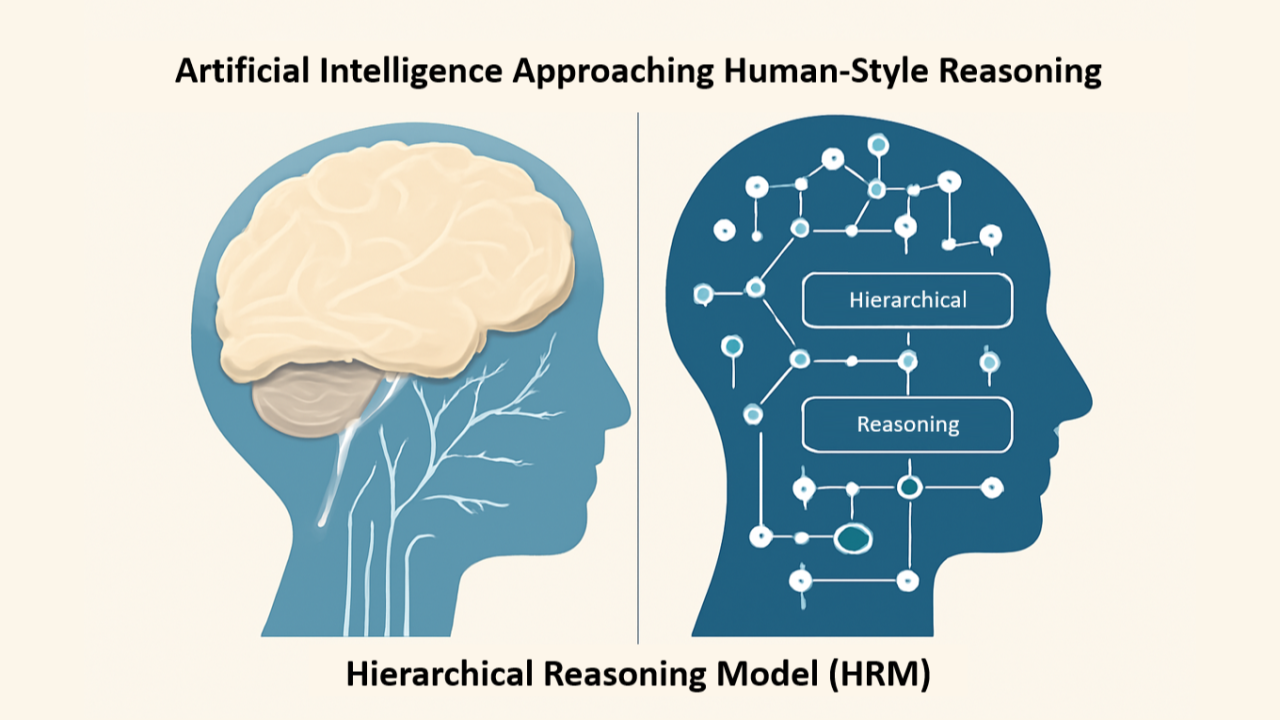
In a groundbreaking leap for artificial intelligence, the Hierarchical Reasoning Model (HRM) from Sapient Intelligence is redefining AI efficiency, offering 100 times faster reasoning than traditional large language models (LLMs) while training on a mere 1,000 examples. This innovation, detailed in a recent arXiv paper, outperforms leading models like Claude 3.5 and Gemini on complex tasks, signaling a shift toward more accessible and sustainable AI. What Is the Revolutionary AI Architecture HRM and Its Impact on Machine Learning? The advent of a groundbreaking AI architecture marks a pivotal moment in the evolution of artificial intelligence, promising to redefine the boundaries of machine reasoning and learning efficiency. Unlike traditional large language models (LLMs) that require extensive datasets and substantial computational resources, this new architecture achieves unparalleled reasoning speeds, delivering up to 100 times faster performance with just a fraction of the data. Utilizing only 1,000 training examples, this innovation highlights a significant leap in efficiency, accessibility, and practicality of AI technologies. With the successful implementation of this new approach, the technology has outperformed notable AI models such as Claude 3.5 and Gemini, setting a new benchmark in AI development. This breakthrough not only accelerates AI applications across various industries but also democratizes access to powerful AI tools, paving the way for broader innovation and exploration. Research Insight: HRM, developed by Sapient Intelligence, features a 27-million-parameter model inspired by the human brain's hierarchical structure, as outlined in its research paper on arXiv . HRM 100x Faster Reasoning Than Traditional LLMs In recent advancements in AI technology, a revolutionary new architecture has emerged, demonstrating a remarkable capability to outperform existing language models in terms of reasoning speed. This innovative architecture boasts reasoning capabilities that are 100 times faster than those of traditional large language models (LLMs). What makes this achievement even more impressive is that it accomplishes such rapid processing with just 1,000 training examples, a fraction of the data typically required by LLMs. The efficiency and speed of this emergent technology represent a significant leap forward in AI performance and applicability. The breakthrough challenges the longstanding dominance of models like Claude 3.5 and Gemini, which have until now been benchmarks in the field. By focusing on optimizing the reasoning process, the new architecture not only accelerates decision-making but also reduces computational overhead, making it a more sustainable option for large-scale applications. This increased speed doesn't come at the cost of accuracy or functionality, as the model continues to deliver precise and relevant outcomes, setting a new standard for AI reasoning tasks. As industries strive for more efficient AI solutions, this cutting-edge development positions itself as a game-changer in AI architecture. According to VentureBeat , HRM achieves this via latent reasoning in a compressed space, bypassing token-heavy chain-of-thought processes. 100x speed stems from parallel latent computations, not serial token generation. Outperforms on ARC-AGI benchmark with 40.3% score vs. Claude's 21.2%. Achieving HRM Efficiency with Just 1,000 Training Examples in AI Models The advancement in AI architecture that provides 100 times faster reasoning than large language models (LLMs) with only 1,000 training examples is a remarkable achievement. Traditionally, developing sophisticated AI models demanded vast datasets to train effectively, which posed a significant barrier due to the time, cost, and computational resources required. This new AI model, however, challenges those norms by demonstrating that with a highly efficient architecture design and optimization techniques, it is possible to achieve outstanding results with minimal data input. The new architecture relies on advanced machine learning techniques that focus on maximizing information extraction and generalization from limited data. By leveraging transfer learning, meta-learning, and innovative algorithms, it quickly adapts to new tasks, thereby mimicking the versatility and adaptability of human reasoning with considerably fewer resources. The results have demonstrated this streamlined model not only matches but outperforms its larger counterparts in speed and efficiency, offering a promising new direction in AI that emphasizes performance with minimal data input. HRM's GitHub repo shows training on tasks like Sudoku takes just two GPU hours, per Lifeboat Foundation . HRM's Groundbreaking Performance vs. Claude 3.5 in AI Reasoning Tasks HRM’s remarkable performance leap over existing models like Claude 3.5 marks a significant advancement in the field of artificial intelligence. This new architecture is not only designed to understand complex reasoning tasks but also delivers results at a speed previously thought unattainable. One of the most striking aspects of HRM's capabilities is its efficiency in training. While traditional large language models (LLMs) like Claude require massive datasets and compute power to achieve high levels of accuracy, HRM manages to outperform with just 1,000 carefully curated training examples. Maze-Hard tasks solved perfectly by HRM, outperforming Gemini's capabilities. With just 1,000 training examples, HRM leverages advanced data augmentation techniques and a sophisticated understanding of contextual embeddings to learn effectively. This approach reduces the dependency on vast amounts of labeled data, a common bottleneck in training traditional models. Additionally, HRM incorporates a dynamic reasoning module that adapts to the context in real-time, enhancing its ability to draw rapid and accurate conclusions. These innovations collectively position HRM as a game-changer in the AI landscape, surpassing the capabilities of competitors like Claude 3.5 and Gemini by prioritizing speed, efficiency, and agility. The model's coupled recurrent modules enable hierarchical convergence, as per Emergent Mind . Implications for the Future of AI Development with HRM Technology Finally, as AI systems become more efficient and less data-dependent, they open up new possibilities for real-time applications, from autonomous vehicles to responsive virtual assistants, effectively bridging current technological gaps and enhancing human-computer interactions. HRM's emergence heralds a new era of efficient AI, challenging established paradigms and fostering innovation. For more on "HRM AI vs Claude 3.5 Gemini benchmarks," stay tuned to ObjectWire.org

In a controversial decision, the Environmental Protection Agency (EPA) has proposed repealing the 2009 Endangerment Finding, the legal backbone for regulating greenhouse gases under the Clean Air Act. This move could unravel decades of climate policy, affecting emissions from vehicles, power plants, and industries amid rising global temperatures. As extreme weather events intensify, this repeal sparks debates on environmental protection versus economic growth. Long-tail keywords like "EPA repeal Endangerment Finding consequences for U.S. climate policy" guide this in-depth analysis, drawing from recent reports and legal insights. What Is the EPA Endangerment Finding and Its Impact on U.S. Climate Policy? The Endangerment Finding, issued by the EPA in 2009, declares that greenhouse gases (GHGs) like carbon dioxide and methane endanger public health and welfare by driving climate change. This official EPA determination enabled federal regulations to cut emissions across sectors, aligning with international agreements like the Paris Accord. It shifted U.S. policy by recognizing climate change as a health threat, empowering stricter standards and spurring clean energy investments. Over 15 years, it has influenced corporate sustainability and state-level innovations. Historical Context of the Endangerment Finding From Massachusetts v. EPA Ruling The finding stems from the 2007 Supreme Court case Massachusetts v. EPA , where states sued the EPA for not regulating GHGs. The Court ruled GHGs are pollutants under the Clean Air Act, mandating an endangerment assessment. Under Obama, the 2009 finding targeted six GHGs, laying groundwork for vehicle and power plant rules. Despite challenges, it remains a policy cornerstone. Supreme Court affirmed EPA's authority to regulate GHGs as air pollutants. Finding concluded GHGs threaten health via extreme weather and sea-level rise. EPA's Rationale for Repealing the Endangerment Finding Under Clean Air Act The EPA argues the 2009 science is outdated, with new research questioning GHG risks. Economically, regulations burden businesses, costing billions and stifling growth. Repeal could enable flexible, state-led approaches, fostering innovation. The proposal aims to balance science, economy, and federalism. A U.S. Chamber of Commerce-aligned study claims $500 billion in compliance costs, while NRDC counters with $1.2 trillion in benefits. Potential Consequences of Repealing EPA Endangerment Finding on Greenhouse Gas Emissions Repeal would erode the basis for federal GHG rules, potentially increasing emissions and worsening climate impacts like floods and heatwaves. It could hinder U.S. Paris commitments, fragment policy, and deter clean tech investments. Air quality declines might spike health issues. Rhodium Group projections warn of 1.8 billion extra tons of CO2 by 2035, accelerating sea-level rise. Increased emissions could add 15 cm to coastal sea levels by mid-century. Health risks rise for vulnerable groups, with more respiratory illnesses. Legal and Political Reactions to EPA Proposal to Repeal Endangerment Finding Environmental groups and states vow court challenges, citing scientific consensus. Democrats decry it as fossil fuel favoritism; Republicans hail regulatory relief. The debate highlights economic vs. ecological tensions. In conclusion, this repeal could reshape climate action, with profound effects on health, economy, and environment.

Jerome Powell, serving as Chairman of the Federal Reserve since 2018, faces escalating scrutiny over allegations of mismanagement and misleading Congress regarding a multibillion-dollar renovation of the central bank's headquarters. This controversy has intensified amid broader tensions between the Trump administration and the Fed, highlighting concerns about fiscal responsibility, transparency, and the independence of the nation's monetary authority. The $2.5 billion renovation of the Marriner S. Eccles Building and the adjacent 1951 Constitution Avenue Building has been labeled "ostentatious" by detractors, with accusations focusing on cost overruns and luxury features that Powell allegedly downplayed in congressional testimony. Jerome Powell's Leadership Amid Federal Reserve Criticism 2025 Under Powell's leadership, the Federal Reserve has navigated significant economic challenges, including post-pandemic recovery and inflation management. His tenure has been marked by efforts to maintain financial stability through monetary policy adjustments, though not without controversy. White House Budget Director Russell Vought has publicly stated that Powell "has grossly mismanaged the Fed," pointing to the renovation's ballooning costs as evidence. GOP Senator Tim Scott demanded more details from Powell on July 24, 2025, reflecting ongoing congressional pressure. Despite these criticisms, Powell has defended his actions, emphasizing transparency and the necessity of the upgrades for long-term functionality. Allegations of Mismanagement in Jerome Powell Federal Reserve Headquarters Project Allegations against Powell include claims of overseeing extravagant spending on the renovation, which critics compare to a "Taj Mahal" or "Palace of Versailles." The project, initially estimated at lower costs, has reportedly exceeded budgets by up to $700 million, fueling accusations of poor oversight. Trump appointees, including FHFA Director Bill Pulte, have accused Powell of lying to Congress about the expenditures. Republican lawmakers argue this reflects a disconnect from economic realities facing Americans, with funds allegedly diverted to non-essential luxuries amid calls for fiscal restraint. Powell has countered by noting that the buildings, dating back to the 1930s, require essential safety and modernization upgrades, disputing characterizations of extravagance. Details of the $2.5 Billion Federal Reserve Renovation Cost Overruns Controversy The renovation encompasses structural enhancements, hazardous material removal, and modernization of the Eccles Building and adjacent facility. Features under scrutiny include new domestic marble installations, a VIP dining room , and rooftop gardens, which critics claim were understated in Powell's communications. The project, ongoing since planning began years ago, has faced delays and inflation-driven cost increases. President Trump is scheduled to tour the site on July 24, 2025, amid heightened scrutiny, potentially amplifying the debate. Powell responded to inquiries with a detailed letter, asserting compliance with federal guidelines and the necessity for seismic and security improvements. Reports indicate some luxury elements were influenced by Trump-era appointees, adding layers to the bipartisan blame.

What is OpenAI's $10M+ AI Consulting Business 2025? OpenAI has significantly expanded into the AI consulting arena in 2025, launching a high-value service line that starts at over $10 million per engagement, emphasizing the critical role of deployment in realizing AI's business potential. This venture addresses the growing demand for expert guidance in integrating advanced AI models like GPT-4o into enterprise operations, bridging the gap between cutting-edge technology and practical, outcome-driven applications. As organizations grapple with AI implementation challenges, OpenAI's consulting arm positions the company as a key player in the commercialization of generative AI, competing directly with traditional firms like Accenture and McKinsey. What Service does Open AI Consulting Provide ? The service focuses on embedding forward-deployed engineers (FDEs) within client teams to customize and deploy AI solutions , ensuring seamless integration and high-impact results. Open AI Consulting Clients are already lined up OpenAI's consulting has already yielded notable successes, exemplified by a $200 million deal with the U.S. Department of Defense (DoD), where FDEs deployed customized GPT-4o models for advanced analytics and operational automation, enhancing decision-making in defense workflows. Another key project involves Southeast Asia's Grab , integrating AI for ride-hailing optimizations, fraud detection, and personalized services, resulting in improved efficiency and user satisfaction. Conversely, these issues create opportunities for growth, with the AI consulting market projected to reach $90.99 billion by 2035. OpenAI can leverage its expertise to fill knowledge gaps, driving innovation in automation and efficiency. As demand surges, partnerships with IT firms like HCLTech signal expanding ecosystems for comprehensive AI solutions. The Future of AI Consulting at Open AI Looking ahead, OpenAI plans to scale its consulting by hiring more FDEs and deepening fine-tuning capabilities, potentially reshaping the industry towards outcome-driven AI services. This pivot may erode traditional consulting margins, positioning tech builders like OpenAI as new giants, while fostering collaborations and innovations in enterprise AI. As 2025 progresses, observers anticipate more government and enterprise deals, solidifying deployment's role in AI's future. Challenges IN Open AI Deployment Consulting AI deployment presents hurdles like integrating with legacy systems, ensuring data quality, and addressing ethical biases, which can lead to project failures if not managed expertly. Regulatory compliance, user adoption, and governance add complexity, particularly in sensitive industries like defense and finance. OpenAI's consulting mitigates these by providing specialized guidance, but broader market challenges include talent shortages and escalating costs.

Sam Altman's visit with Hedera's team sparked significant interest within the tech community, focusing attention on the potential synergies between Altman's ventures, including OpenAI, and Hedera's unique blockchain platform. The intersection of AI and blockchain | Sam Altman And HBAR Leadership Meet Altman and the team explored the implications of decentralized infrastructure for various industries, contemplating its ability to redefine privacy, security, and data management standards. They deliberated on the importance of regulatory compliance and how strategic partnerships could facilitate broader adoption and integration of blockchain solutions. Altman praised Hedera's approach to minimizing environmental footprints while maintaining high security and performance levels. Through these discussions, a shared commitment to innovation and responsible technology development emerged, highlighting the synergy between Altman's visionary insights and Hedera's strategic direction. Their exchange demonstrated a mutual enthusiasm for harnessing blockchain's transformative power to pave the way for a decentralized future. Sam Altman's Insights On Blockchain Technology for Open AI As a prominent figure in the tech world, Altman is well-known for his keen insights and forward-thinking approach, making his perspectives highly valued in technological circles. During his visit, Altman engaged with Hedera's team to explore the innovative solutions the company is developing in the landscape of distributed ledger technology. Altman's discussions with the Hedera team also covered the importance of scalability in blockchain networks, exploring how Hedera Hashgraph's architecture could address some of the current limitations facing traditional systems. Through this visit, Altman underscored the critical role of continued innovation in the blockchain ecosystem, emphasizing that the collaborations between visionary thinkers and cutting-edge companies like Hedera are essential for advancing the field. Altman's Vision For Decentralization >> Open ai & Hedera Both organizations stand at the forefront of technological innovation, with OpenAI leading in artificial intelligence development and Hedera pioneering distributed ledger technology. The intersection of AI and blockchain presents a fertile ground for cooperation. OpenAI's advanced machine learning models, when integrated with Hedera's scalable and secure public ledger, could offer unprecedented solutions across various industries. Open Ai's future is Decentralized on Hbar? During Sam Altman's visit to the Hedera Hashgraph offices, the conversation inevitably turned towards the future prospects of decentralization, a concept that is central to both Hedera's mission and Altman's vision. Altman, known for his forward-thinking approach to technology and innovation, emphasized that true decentralization could redefine the landscape of digital interaction and governance. Sam Altman's Views on Decentralization He believes that decentralized networks hold the potential to democratize data, allowing users greater control and ownership over their information, contrasting sharply with the traditional centralized systems that dominate today's internet economy. Altman highlighted that decentralization is not merely a technological shift but a cultural one. This cultural shift involves a transition from trust in centralized authorities to a trust protocol embedded within decentralized networks. By removing middlemen, such systems could lead to faster innovation, lower costs, and more inclusivity in the digital economy. Community Reactions To Altman's Engagement With Hedera Altman's engagement with Hedera was seen as a significant endorsement of their innovative efforts. Many community members expressed optimism, speculating that Altman's visit could signal potential collaborations or newfound interest in Hedera’s technology, particularly its Hashgraph consensus algorithm. This speculation was fueled by Altman's track record of supporting groundbreaking projects and technologies that promise to redefine industries. On social media platforms and forums, discussions buzzed with analyses of what Altman's visit could mean for the future of Hedera and its positioning within the competitive landscape of blockchain technologies.

Wondering what CHIRLA, the Coalition for Humane Immigrant Rights, is all about and how they're linked to Los Angeles Mayor Karen Bass's cash cards program for immigrants scared to go to work due to ICE raids? With immigration issues heating up, understanding groups like CHIRLA is key for anyone following immigrant rights in Los Angeles. What is CHIRLA? History of the Coalition For Humane Immigrant Rights? CHIRLA, short for the Coalition for Humane Immigrant Rights, is a leading nonprofit based in Los Angeles dedicated to protecting and advancing the rights of immigrants and refugees across the U.S. Founded in 1986 after the Immigration Reform and Control Act, CHIRLA started as a response to unfair immigration policies and has grown into a powerhouse for advocacy, education, and community support. Their work focuses on building a society that values immigrants' contributions, ensuring equal rights regardless of status. At its core, CHIRLA empowers immigrants through storytelling, activism, and policy changes at local, state, and national levels. CHIRLA is Building an Inclusive Society for ImmigrantsSince 1986 CHIRLA's mission is straightforward: to create a just society fully inclusive of immigrants, advancing their human and civil rights. Key strategies include community education, leadership development, and advocacy. For example, CHIRLA offers resources to help immigrants understand their rights and access services safely. In their work with Mayor Karen Bass , they've supported initiatives like cash assistance cards, which provide financial relief to immigrants hesitant to work due to fears of deportation or raids. Key Initiatives and Programs by CHIRLA in 2025 CHIRLA runs several programs to empower immigrant communities in Los Angeles and beyond. Policy advocacy is a big focus, challenging anti-immigrant laws and pushing for investments in immigrant communities. They also provide low-cost legal services, recognized by the Board of Immigration Appeals, including help with applications and representation. Organizing efforts involve rallies, voter outreach via the Immigrant Political Power Project, and volunteer opportunities for marches and events. Mayor Karen Bass and Her Support for Immigrant Communities in LA Los Angeles Mayor Karen Bass has been a strong ally for immigrants since taking office. She's issued executive directives to protect communities from federal enforcement, like the one in July 2025 responding to unlawful ICE raids. Bass works with groups like CHIRLA to ensure immigrants' voices are heard and needs met, fostering inclusivity. One key move is providing cash assistance through cards distributed by nonprofits, helping families impacted by raids. These cards, with a couple hundred dollars each, aim to ease financial burdens for those afraid to work due to immigration fears, similar to past programs like Angeleno Cards during COVID. The Collaboration Between CHIRLA and Mayor Bass on Cash Cards CHIRLA and Mayor Bass's partnership shines in their response to recent ICE activities. In June and July 2025, amid protests and raids in areas like MacArthur Park, Bass held press conferences with CHIRLA's Executive Director Angelica Salas to address concerns. CHIRLA is key in distributing these cash cards, funded privately, to affected immigrants. The cards help workers who skip shifts out of fear, providing quick relief and security. This initiative bridges government and community, with CHIRLA using its expertise for outreach and education. It reaffirms CHIRLA's mission while enhancing LA's policies to protect diverse residents. CHIRLA's Role in Providing Cash Cards for Vulnerable Workers CHIRLA acts as a frontline distributor for Mayor Bass's cash card program, leveraging their community ties to reach those most in need. They educate immigrants on using the cards safely, building trust and encouraging economic participation without deportation fears. As a liaison, CHIRLA ensures the program fits real-life challenges, like workplace exploitation. This effort empowers vulnerable workers, boosting their integration and contributions to LA's economy. CHIRLA is a vital force for immigrant rights, and their work with Mayor Bass on cash cards in 2025 shows practical support for those afraid to work. Stay informed on immigrant rights—groups like CHIRLA are making a difference daily.

As a standout star in the WNBA, Clark's skills and charisma are drawing massive crowds and sparking intense rivalries. In this article, we'll explore her impact on the league, including the buzz around top WNBA rivalries like Caitlin Clark vs Angel Reese in 2025, and how it's boosting popularity. We'll keep it simple and straightforward, perfect for any fan wanting to catch up on the excitement. The Caitlin Clark Effect Explained The WNBA is undergoing a massive transformation, thanks in large part to stars like Caitlin Clark. Viewership spikes show how much people appreciate the athleticism and drama in women's basketball. While the NBA has seen a 19% decrease in TV ratings early in the 2024-25 season, the WNBA experienced a whopping 185.7% increase in viewership during the same period. Women's players often appear more driven and hungry on the court. This hunger translates to intense, heartfelt performances that resonate with fans. How Caitlin Clark vs Angel Reese Rivalry is Driving WNBA Ratings One of the hottest topics in the WNBA right now is the Caitlin Clark vs Angel Reese rivalry in 2025. This matchup between the Indiana Fever's Clark and the Chicago Sky's Reese has been full of intense moments, from hard fouls to trash talk, drawing huge audiences. Their college history adds fuel, and in the pros, it's led to controversial plays and media frenzy, like Reese's suspension after a clash or Clark's reactions to calls. This rivalry isn't just drama; it's boosting ratings. ESPN reported its most-viewed opening weekend ever, thanks to these stars. Fans love the competition, comparing it to NBA greats like Bird vs. Magic. Other rivalries, like Clark vs. Rhyne Howard, are emerging too, adding excitement. Social media buzz and increased coverage are turning casual viewers into die-hards, proving that WNBA rivalries boosting popularity in 2025 are real game-changers. Young Talent and WNBA Rivalries: Caitlin Clark's Role in Elevating the League Clark's arrival has sparked rivalries that make games more thrilling, pushing teams to step up their play. Skill, grit, and social media savvy connects stars with broader audiences, breaking down barriers in women's sports. Clark's arrival has sparked rivalries that make games more thrilling, pushing teams to step up their play. These dynamics highlight diversity and representation, with players' stories amplifying the league's appeal. The Women Leading the League The WNBA's success in 2025 is powered by trailblazing women like Caitlin Clark and A'ja Wilson, who are redefining leadership on and off the court. A'ja Wilson, the Las Vegas Aces ' powerhouse center, continues to dominate with averages of 22.3 points, 9.2 rebounds, and 3.2 assists per game this season. As a two-time WNBA Champion, three-time MVP, and reigning Defensive Player of the Year, Wilson's impact is immense—she's not only leading the league in scoring at 23.6 points midway through but also inspiring teammates and fans with her work ethic and advocacy for equality. Together with Clark's sharpshooting flair, these women are elevating the league's profile, drawing comparisons to NBA icons while proving women's basketball's depth and star power. Their leadership is fostering a new generation of talent, ensuring the WNBA's bright future. Media Coverage Fuels WNBA Rivalries and Growth in 2025 Coverage on mainstream outlets and social platforms dispels myths about women's sports being "less exciting." Instead, it builds icons and narratives that inspire. This attention leads to better sponsorships, higher player pay, and improved facilities. For instance, the media hype around top WNBA rivalries 2025, including Clark-Reese clashes, has spiked ad revenue and merchandise sales. It's a positive cycle: More coverage means more fans, investment, and a stronger league. WNBA Rivalries and Sustained Success Ahead Looking ahead, women's sports look bright, with athletes like Clark and Wilson challenging gender norms and drawing global attention. Media evolution and corporate sponsors are key, funding better programs and equality. Rivalries will keep evolving, keeping the WNBA fresh and engaging. Where to Watch the WNBA Want to catch all the action, including those epic rivalries? WNBA games are available on multiple platforms. Nationally televised games air on ABC, ESPN, ESPN2, CBS, CBS Sports Network, ION, NBA TV, and Amazon Prime Video (21 exclusive games, mostly Thursdays). Attendance is up, stereotypes are fading, and young girls see real role models.


